What is the Difference Between Pergolas & Gazebos?
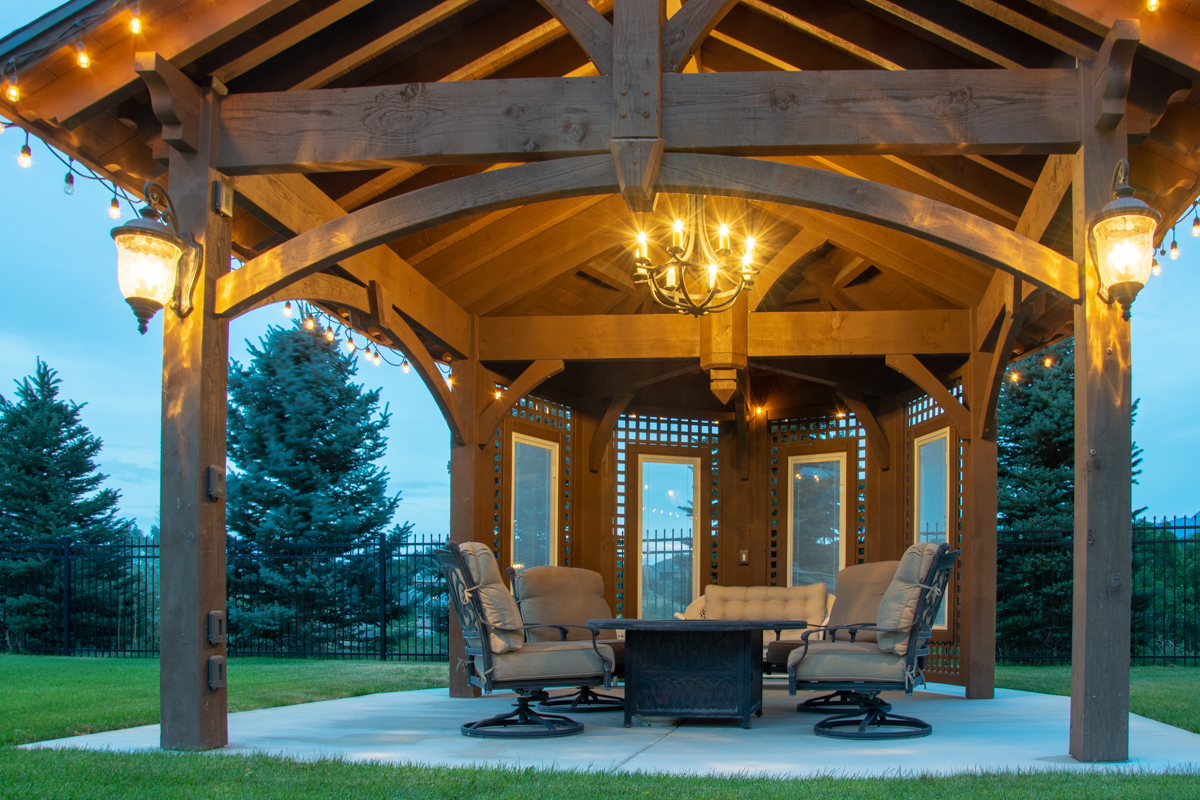
Discover the beauty of architectural composition, diversities', purpose, and process of construction for pergolas and gazebos. You may never look at pergolas or gazebos quite the same again.
What is a Pergola?
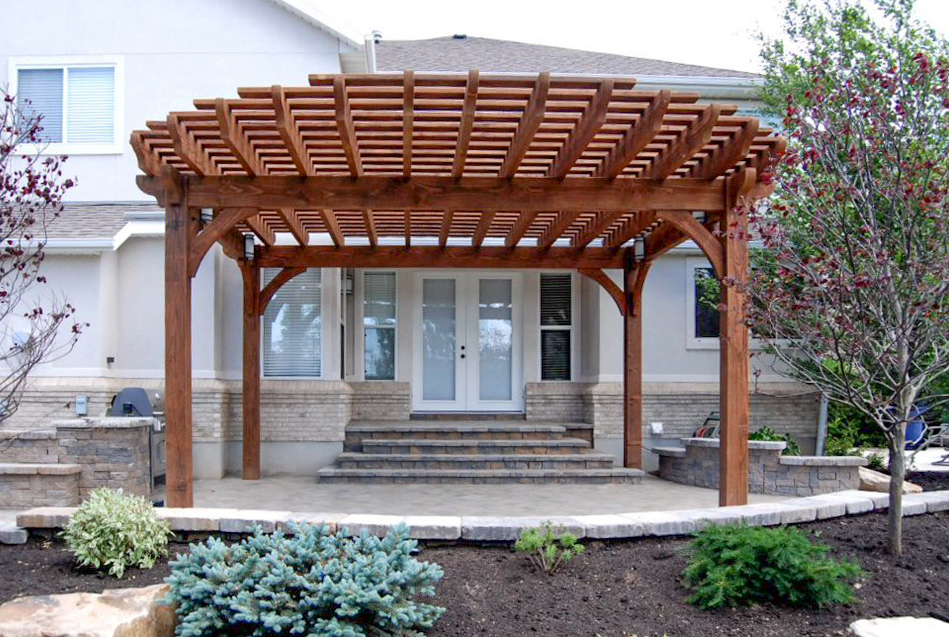
Archetypical Pergola Perception
Pergolas are by design meant to provide the enjoyment of sunshine dappled with the comfort of shade. Commonly, the roofs are rafters supporting crossed-over beams for latticed woodwork. The partially open roof is supported by a colonnade style with posts, pillars, or columns.
.
What is a Gazebo?
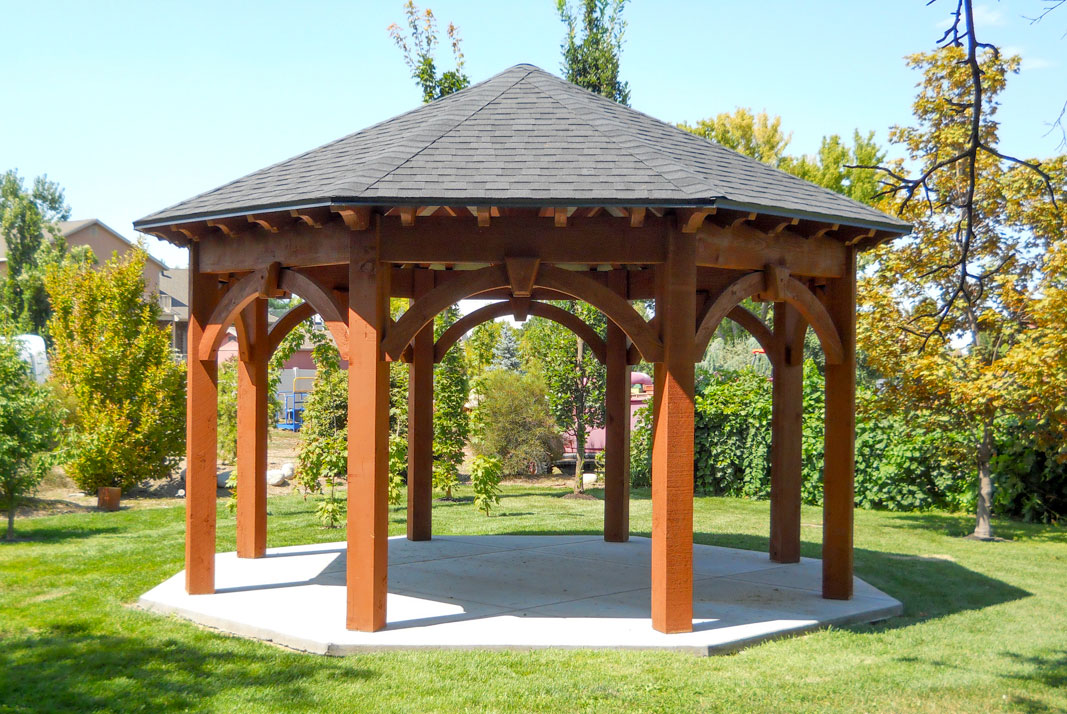
Archetypical Gazebo Perception
Gazebos tend to be more elaborate in style, often hexagonal, octagonal or round. Primarily, since the 19th century, a traditional gazebo roof features a dome-style roof for a beautiful cathedral ambiance. Similarly to modern pergolas, gazebos are also supported with posts, pillars, or columns.
Calling shade shelters by the wrong name is not uncommon.
For example, a gazebo is mistakenly labeled as a pavilion or a pergola as an arbor. Other constructions often used interchangeably include a bower, belvedere, gloriette, Ramada, kiosk, Alhambra, bandstand, rotunda, colonnade, etc.
Happily, misnaming an outdoor living structure it is nothing to overanalyze or bite the nails over - afterall, it is not a baby - but it is the reason for this guide.
The Differences Between Pergolas & Gazebos
The ShadeScape® pavilion plan on the Interpretation of Architectural Identity diagram was designed for a ShadeScape® homeowner who ordered a pavilion with an open (pergola-style) roof.
As you can see, classifying some outdoor living shelters can get somewhat abstruse.
It is also one of the many reasons why Western Timber Frame™ is so well-loved. You can compose, mix and match ideas with almost any design you love your landscape with. That is, most anything you can dream of - as long as it can be engineered to stand strong for your grandchildren's-grandchildren to enjoy it, too.
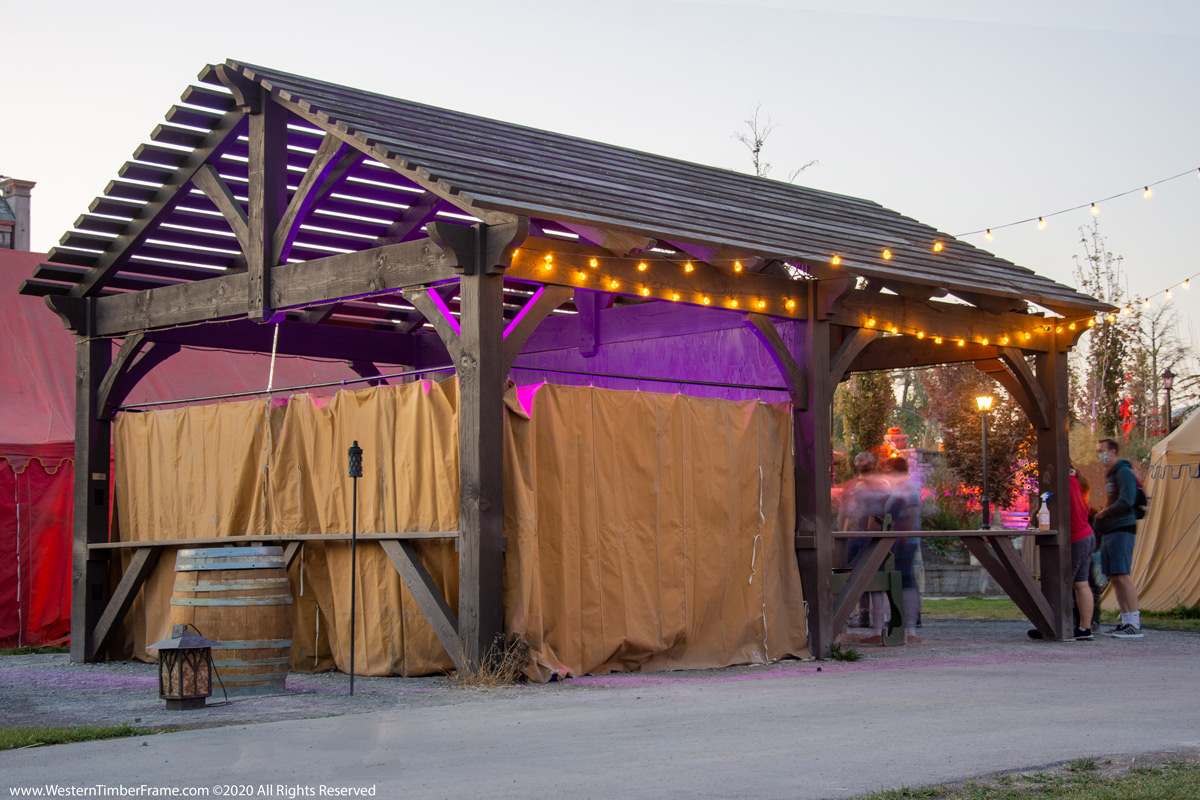
Open pergola style roof on a ShadeScape® pavilion kit installed at a Gothic theme park called #EvermorePark in Pleasant Grove, Utah.
Recognizing the fundamentals of structures with sub-class styles can help in the identification of an outdoor living shelter. The roof is what most often characterizes what type of shade shelter it is. Therefore, instead of beginning at the foundation, we will start at the top.
The Pergola Roof
The element that essentially defines a pergola is the top cover. Pergolas are classified primarily by the openness of a latticed roof that allows the sun to beam through. However, here is where it gets vaguer - pergolas can also have a fully covered roof.
Louvered Roof
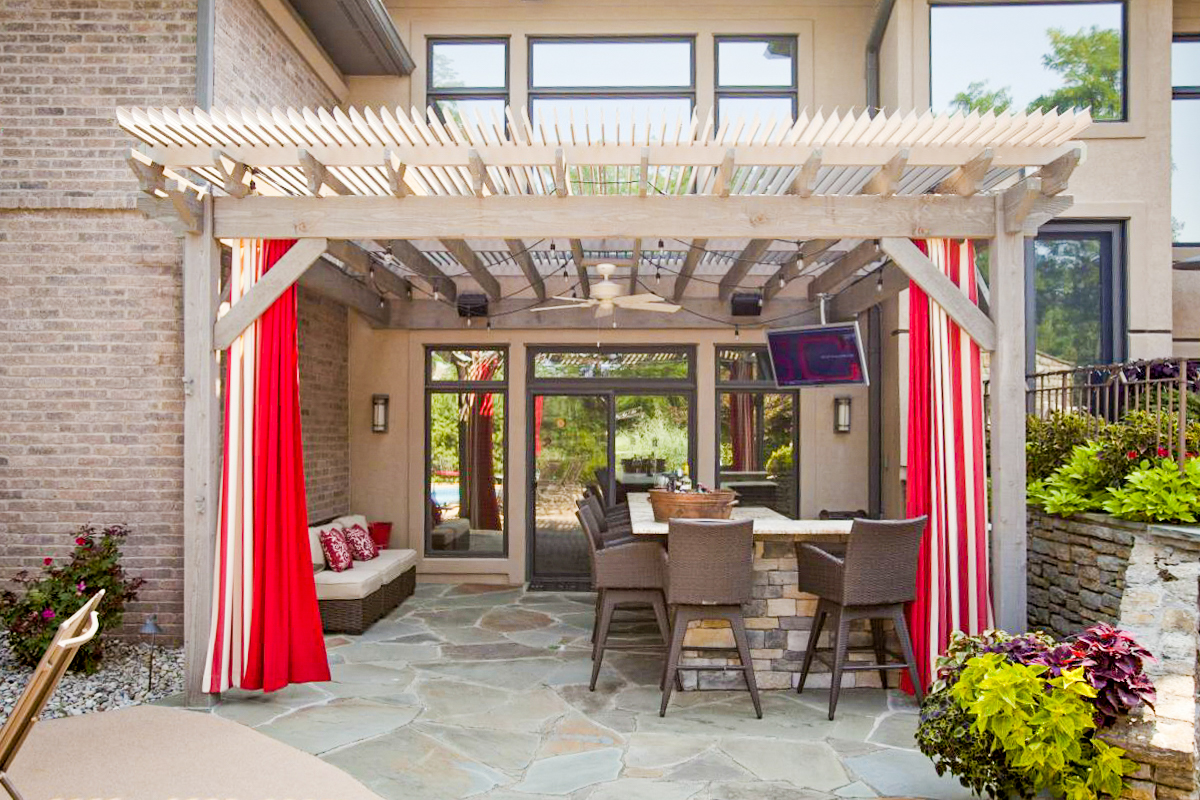
ShadeScape® pergola kit features a remote-controlled louvered roof that will open and shut at the click of a button. It gives complete coverage when it rains or opens to allow some light through on a nice sunny day!
Polycarbonate Roof
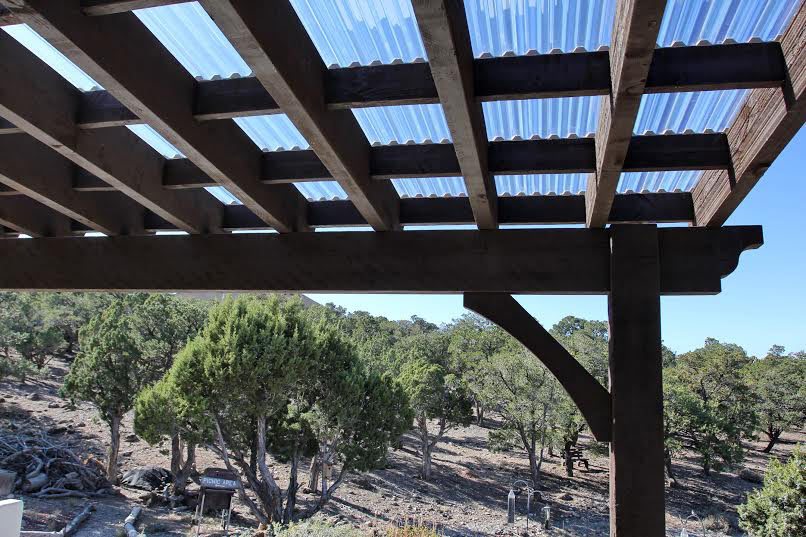
ShadeScape® pergola kit with a polycarbonate roof. The kits can also have a canopy of acrylic or fiberglass letting the sunlight through with full overhead protection.
Shade Cloth Roof
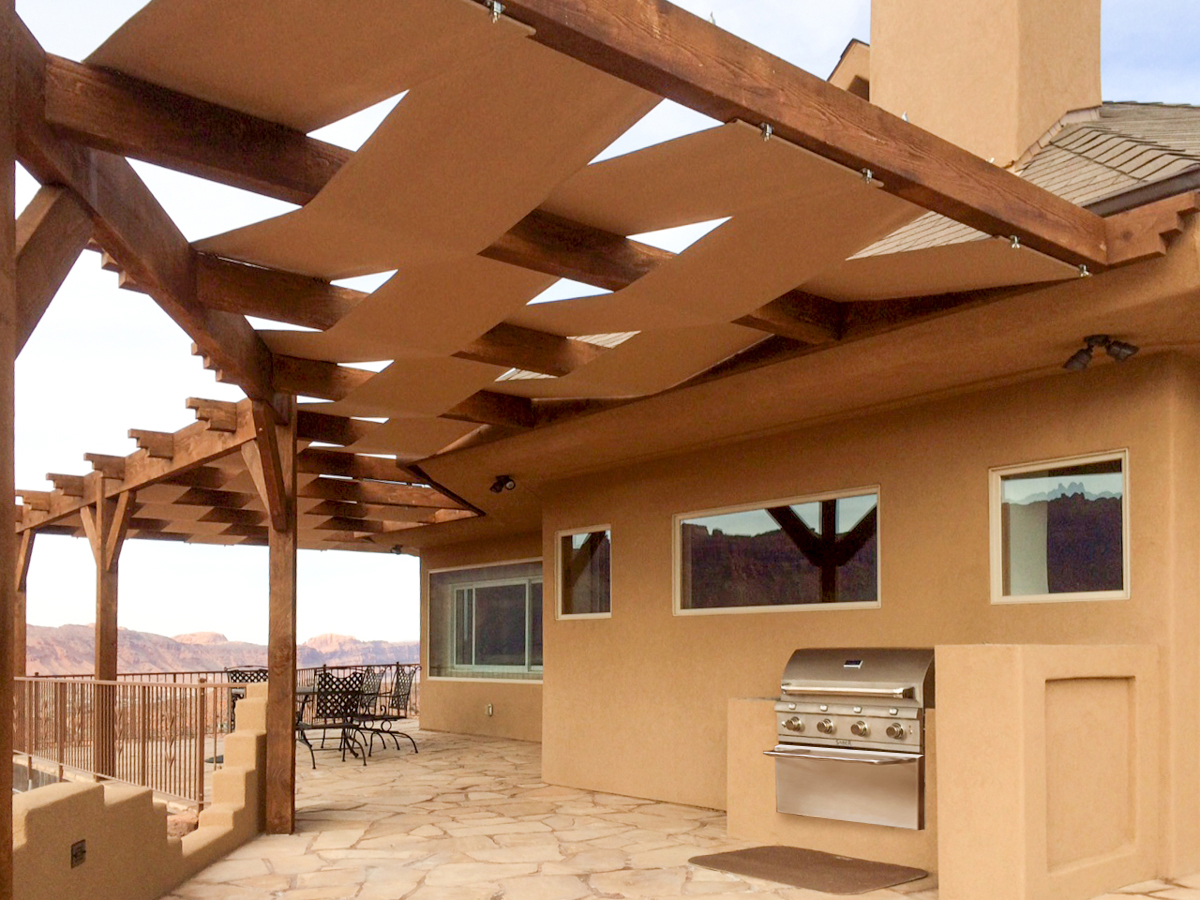
ShadeScape® pergola kit with weaved shade cloth. Shade cloth can cover in an umbrella-like fashion as well.
Custom Roof
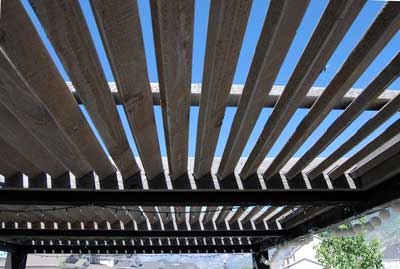
Pergola roof styles are not always latticed or cross-timbers. There are a variety of options and ways to cover a pergola as in this example: a pergola roof fashioned with solid wood louvered shade planks,
Step Roof
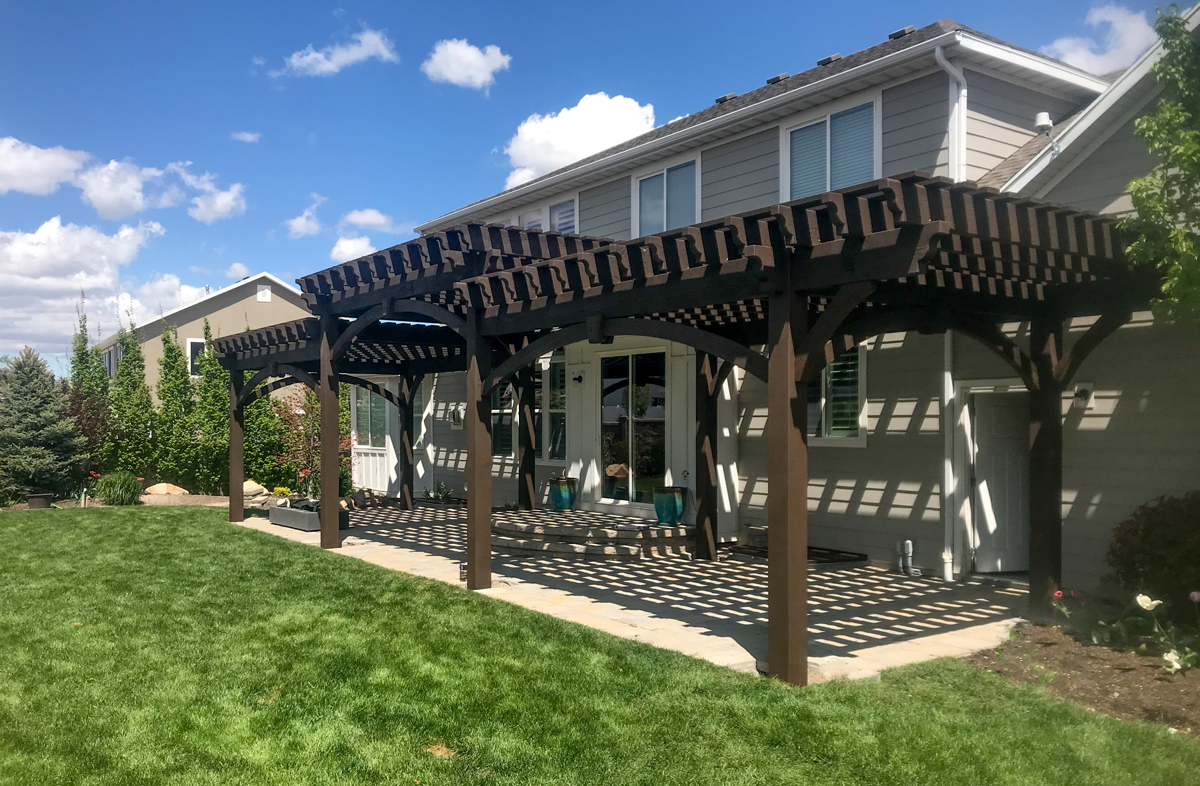
Pergolas with a step-style roof is a pleasing composition. It can also provide additional overhead in places such as an entryway or over windows. If the pergola roof is placed too high, it defeats the purpose of a pergola: shade.
Cantilevered Roof
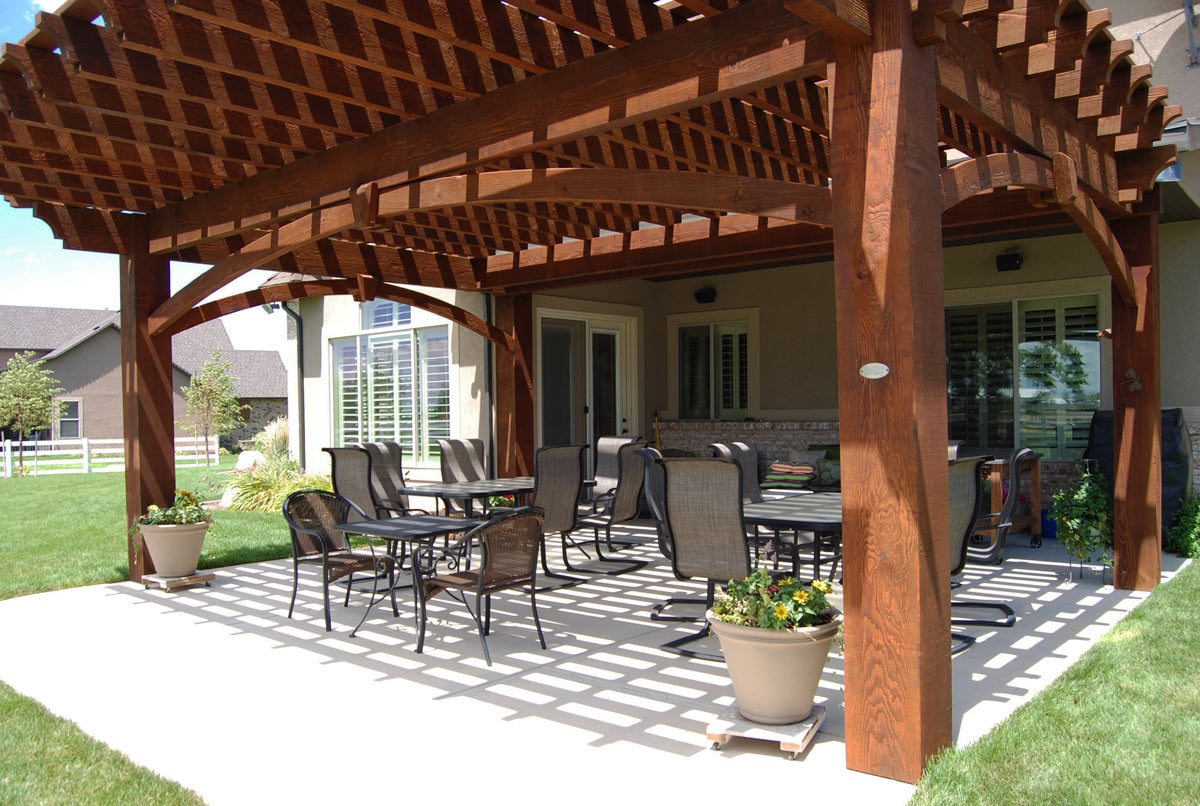
Pergolas are also an easy way to extend the shade with a cantilevered style roof. As you can see in the picture above, the cantilevered roof covers the complete patio living area with shade during the warmest time of the day.
Tiered Roof
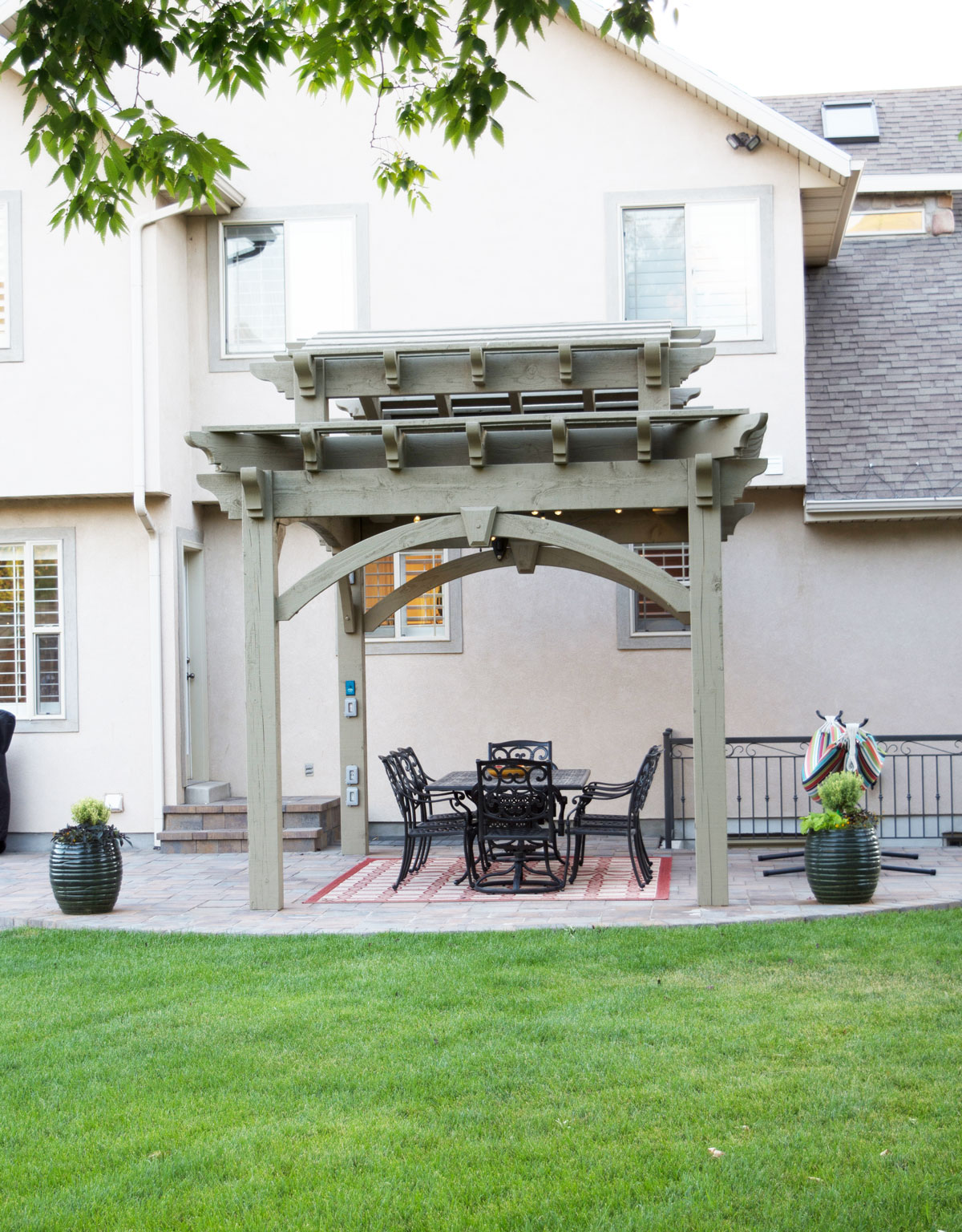
Other styles choices for a pergola roof are: round, raised, tiered, barrel, oval, square, rectangle, step, and even a latticed domed shaped roof similar to a gazebo.
Barrel Roof
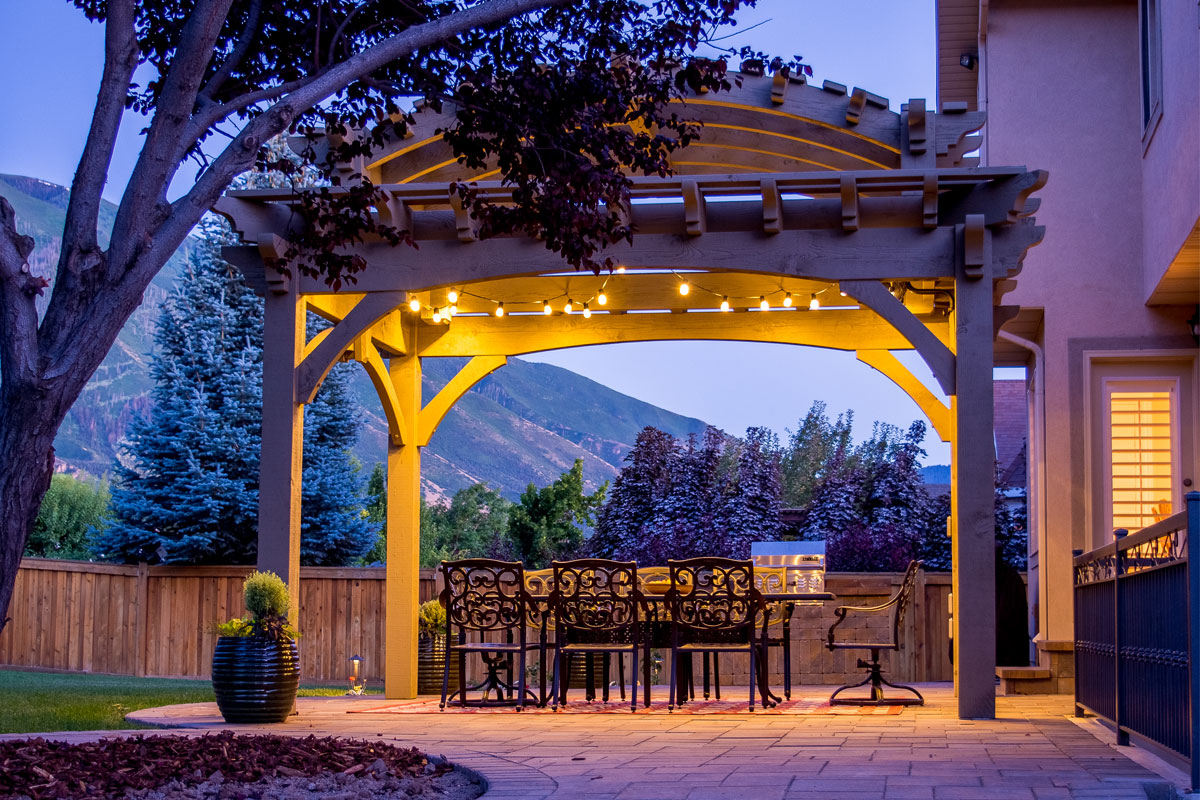
Solar Panel Roof
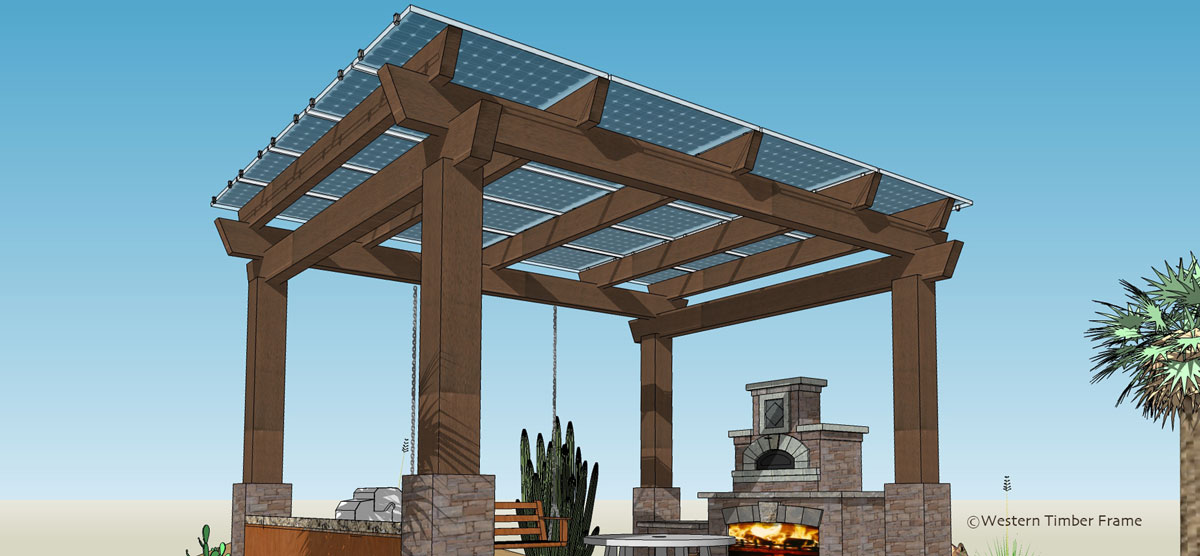
#SolarPanelPergolaPlan
Pergolas are a fantastic solution upon which to mount solar panels. The flat roof allows panels to be ideally mounted with standoff mounting hardware for the maximum angle of incidence, and also allows for seasonal adjustment as needed. The roof can also be customizable with a pitch combined with a flexible site position that allows for maximum seasonal energy collection.
The Gazebo Roof
Gazebo Stereotype
Typically, people think of a gazebo as octagonal - an eight-sided polygon shape - with a convex style roof.
The most common shapes are: • circular • oval • pentagonal - 5-sided polygon • hexagonal - 6-sided polygon • heptagon - 7-sided polygon • octagonal - 8-sided polygon • decagonal - 10-sided polygon • dodecagonal - 12-sided polygon
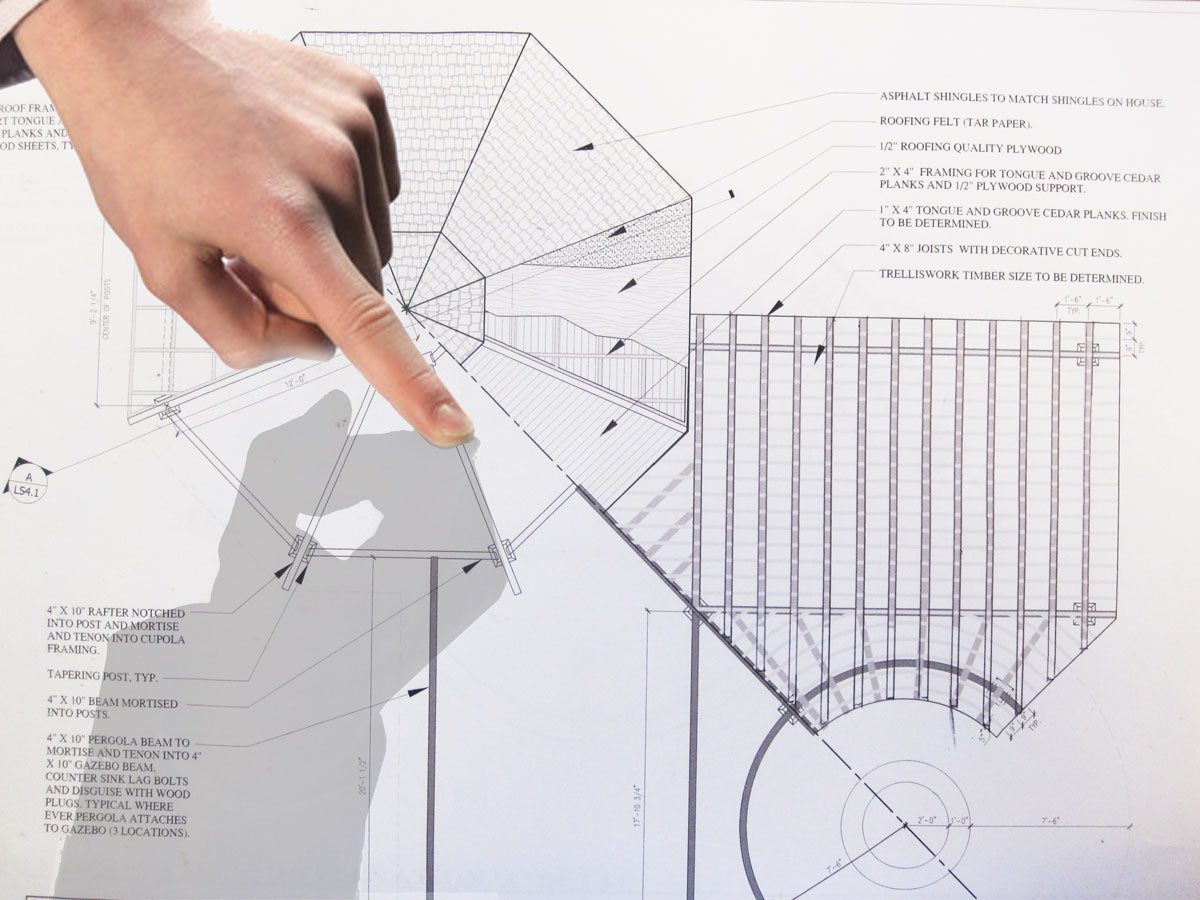
The domed, convex style roof - a classical characteristic of gazebos - achieves one of the highest levels of artistic expression and skill of architectural masters. Similar to dance, music, painting, and sculpture, the aesthetic effect of fine architecture can transcend to spiritual levels.
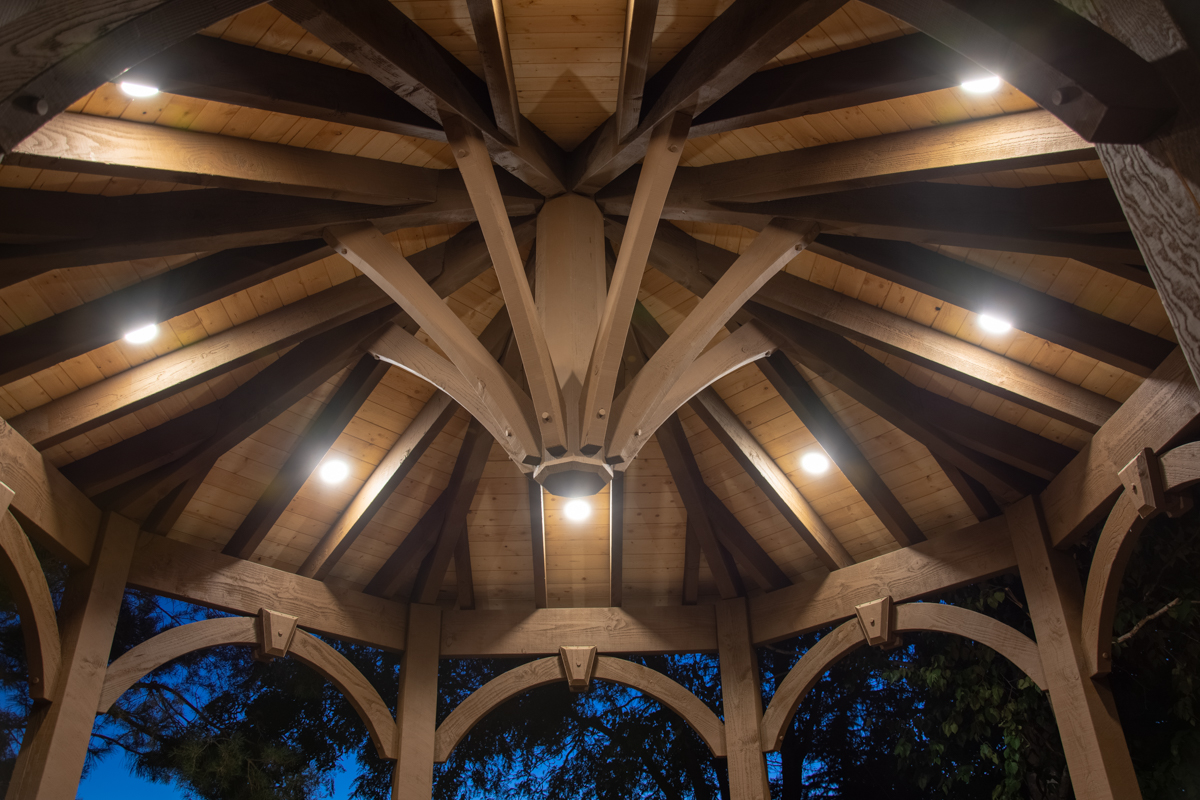
Domed roofs have been long associated with the symbol of power as it mirrors a cosmic canopy. There is such awe when entering beneath some of the great vaulted dome arched cathedrals throughout the world, some say they feel the presence of God.
Who doesn't love the ceiling detail of the king post and braces on traditional style domed roof gazebos? It adds timeless elegance and style to any outdoor garden and patio.
Open Roof
Going against everything seemingly pergola - as shown in the examples of pergola roofs above - pergolas can still be a pergola with a fully covered roof. Similarly, gazebos; which traditionally have full coverage roofing sometimes feature a partially open-style roof.
The interior architecture of this 12-sided domed roof in Bethlehem, Palestine, Israel has multiple circular glass decorative inlays to allow for light. Gazebos, like pergolas, can have acrylic, polycarbonate, fiberglass, or other transparent materials that open the view and light.
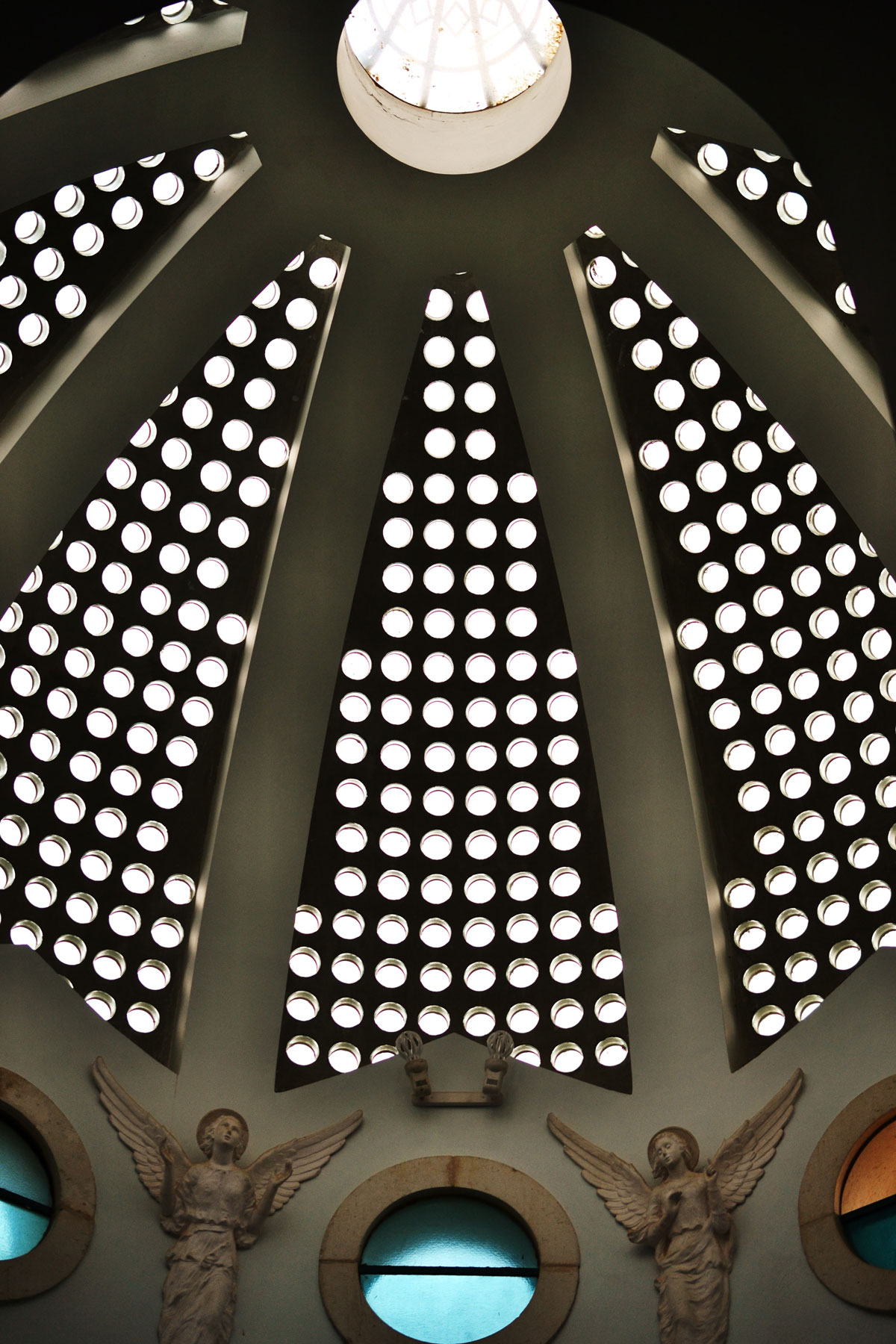
Below are three examples of gazebos with an open-style roof.
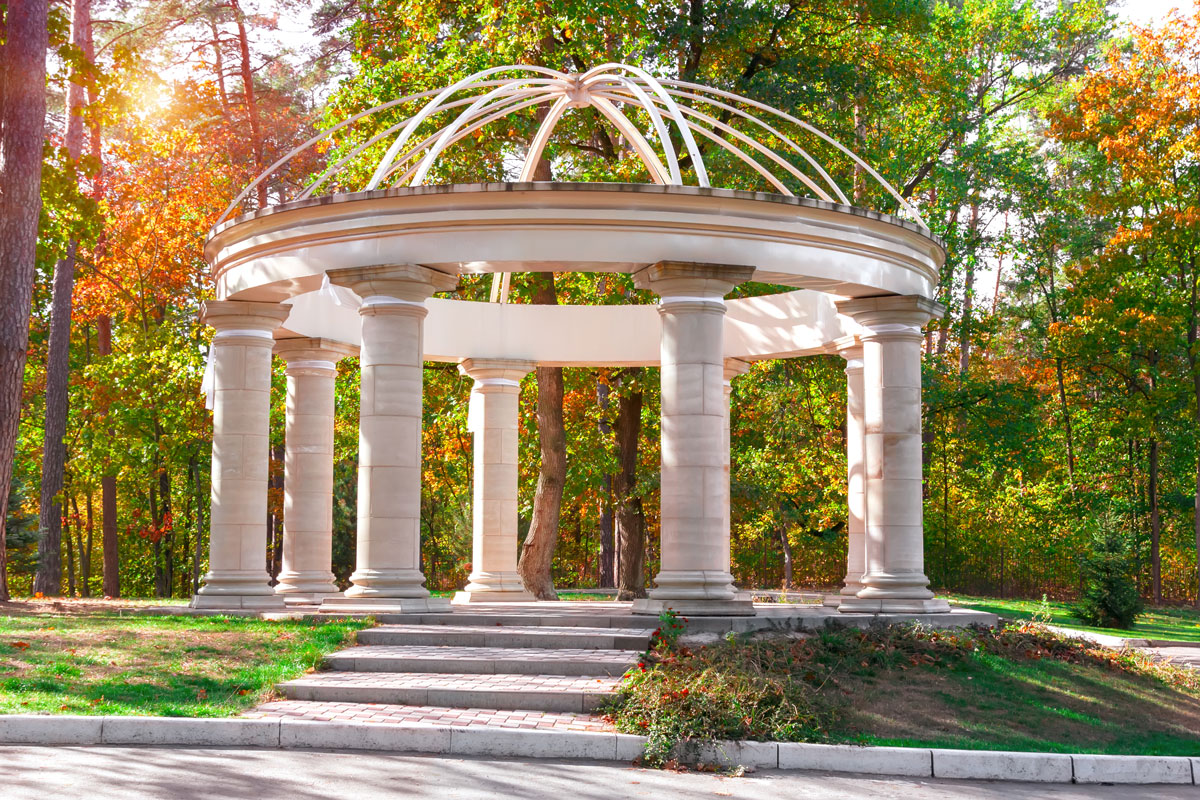
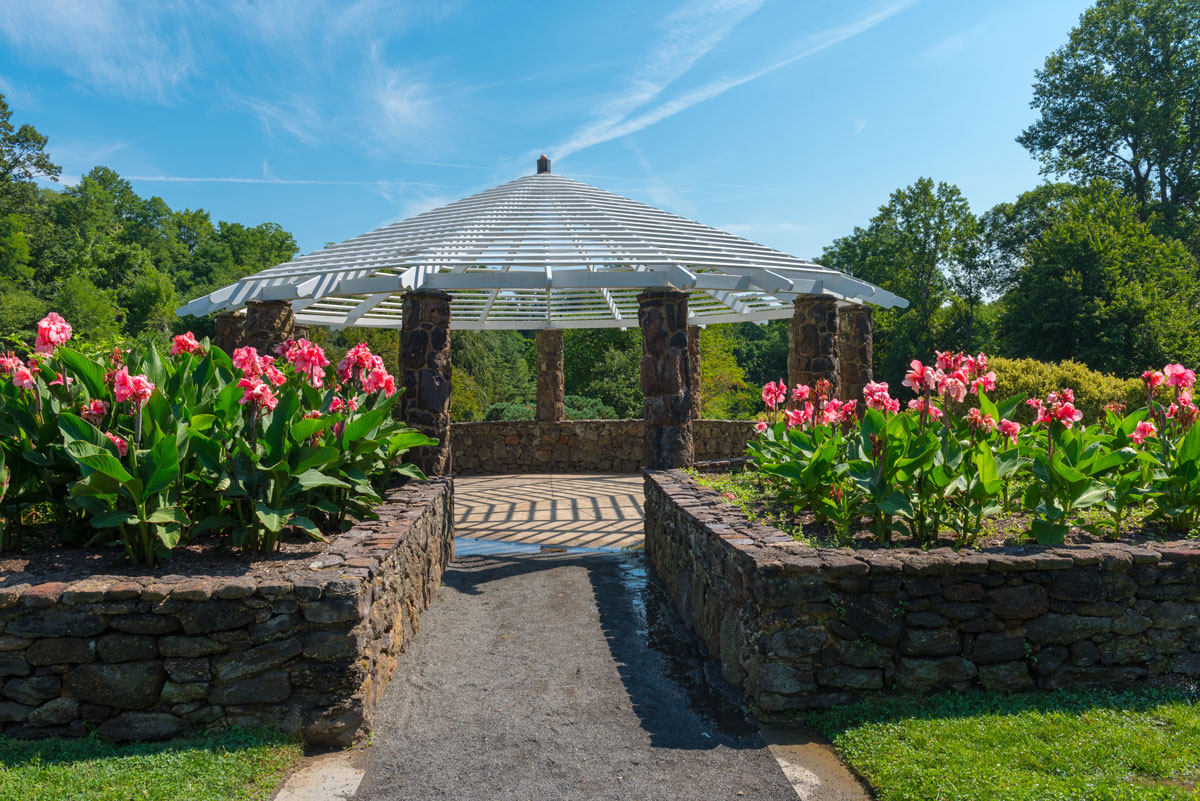
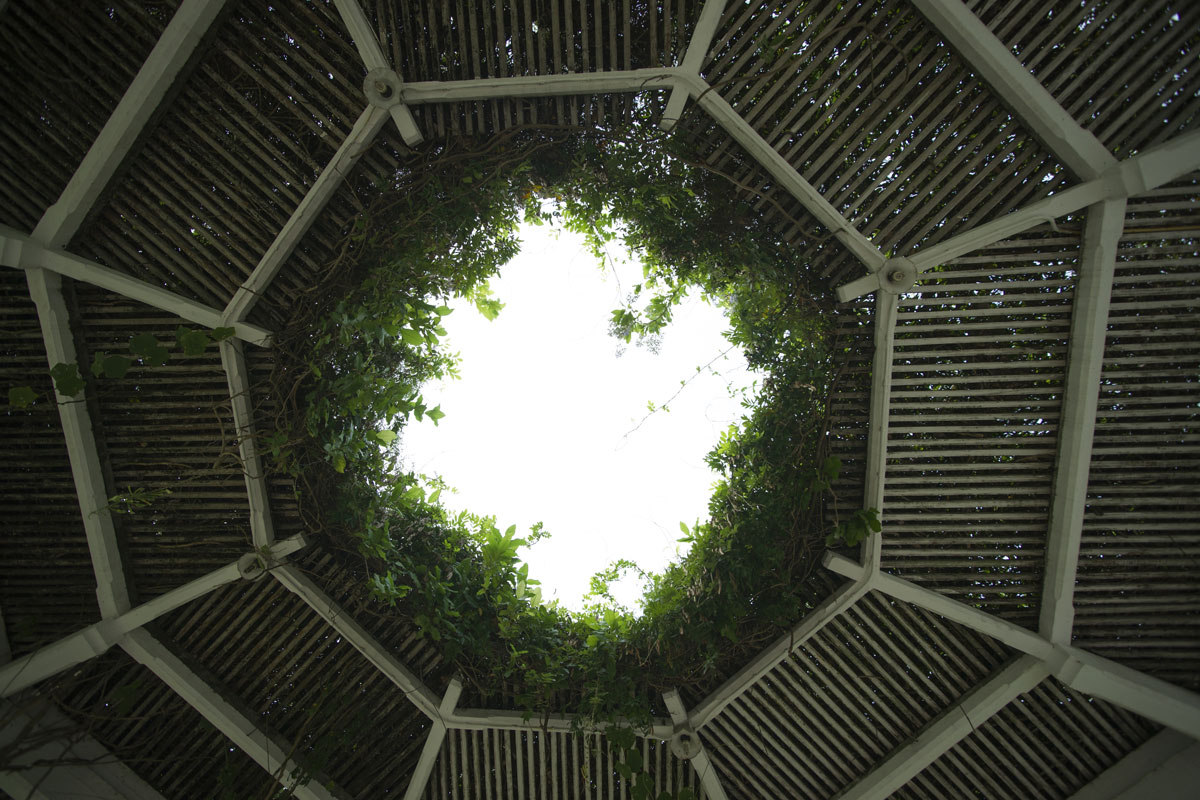
Tiered Cupola Roof
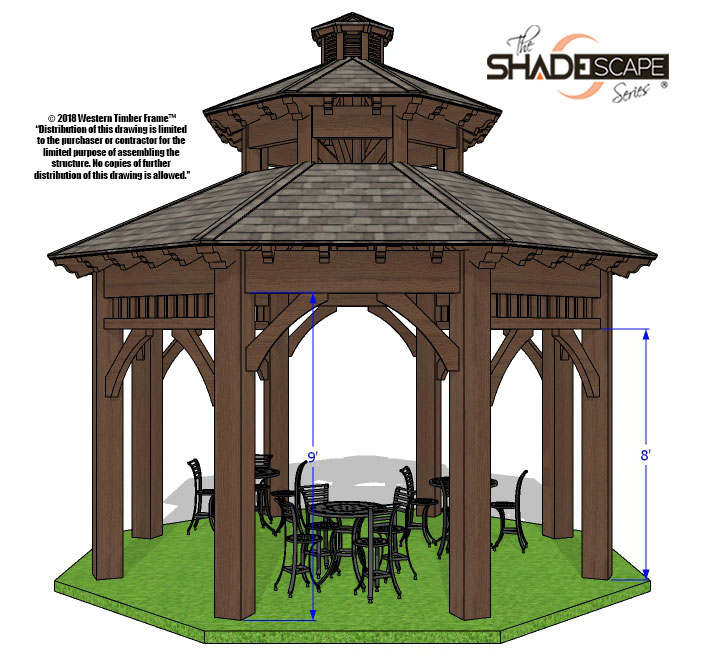
A tiered cupola roof is semi-open, letting in light and air to ventilate through the gazebo.
Sun-to-Shade Ratio
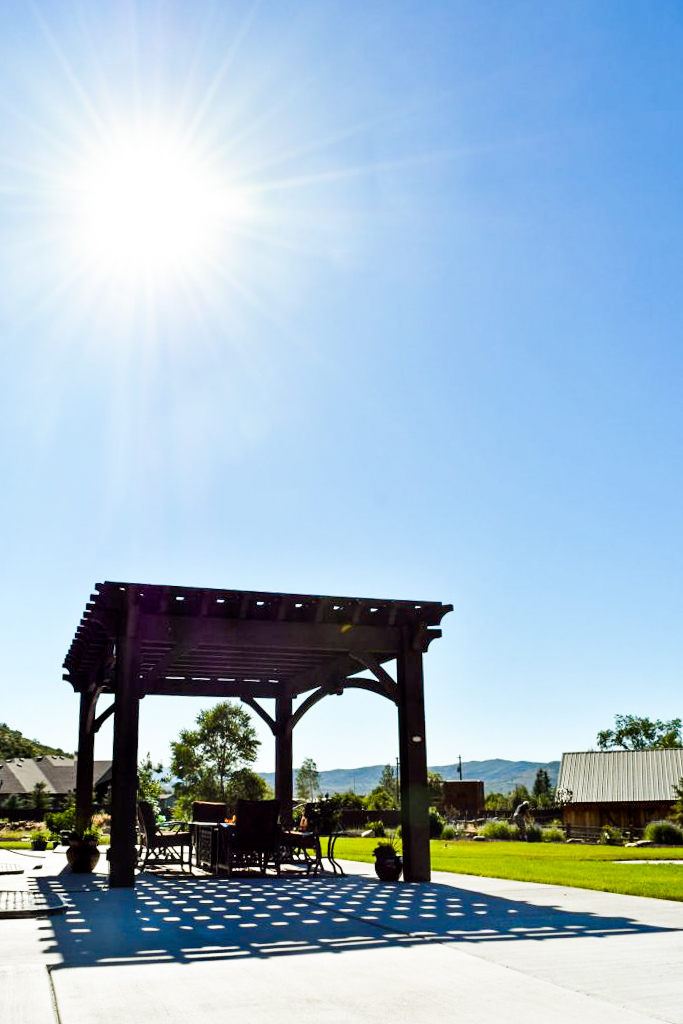
Solid wood has an inherent built-in natural thermostat. Like all trees, the larger the dimensional scale of the wood the better it can regulate a thermal equilibrium for amelioration of temperature.
Timber creates this perfect balance of atmospheric conditions for comfort better than any other alternative shade material.
Pergola Shade
How much and where the sun and shade span will vary on the design of a pergola. Western Timber Frame™ standard shade planks are closer together than conventional pergola kits to ensure that your pergola is at least an 85% shade coefficient. This is the perfect sunlight to shade ratio for human comfort, the equivalent of a good shade tree.
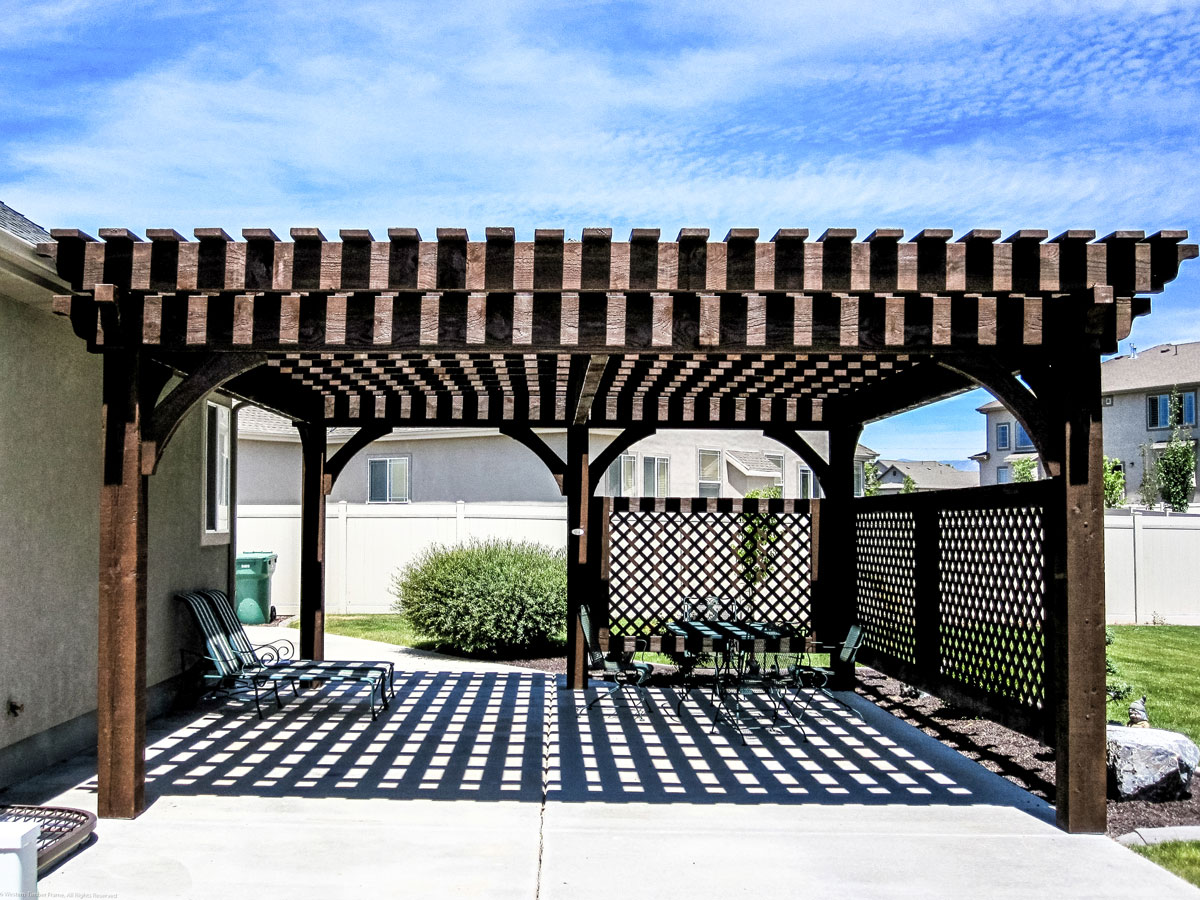
Gazebo Shade
Most gazebos are designed for full protective coverage from the sun, rain or snow. Of course, if the roof features an open cupola or other open areas it will receive more light but give less protection from the elements.
Gazebos, (as in the pergola pictured above) sometimes feature latticed windbreaks, privacy walls, or have windows added in. Walls provide more than privacy or a windbreak; it creates additional shade.
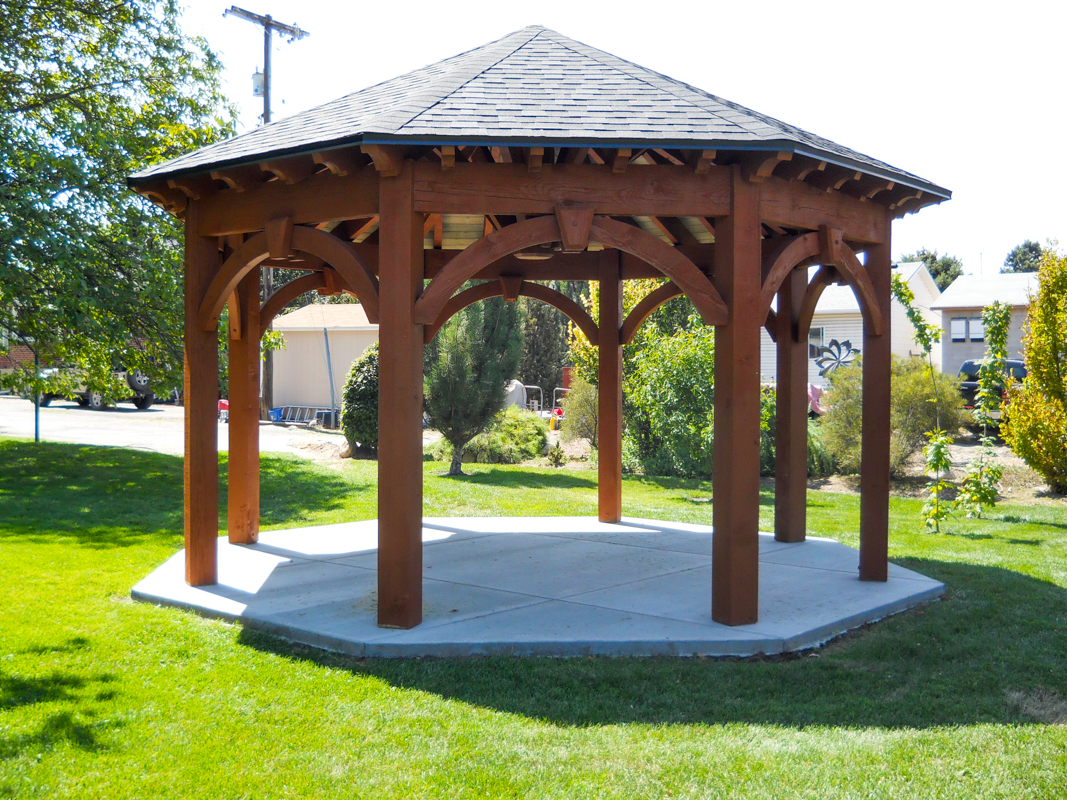
Architectural Composition
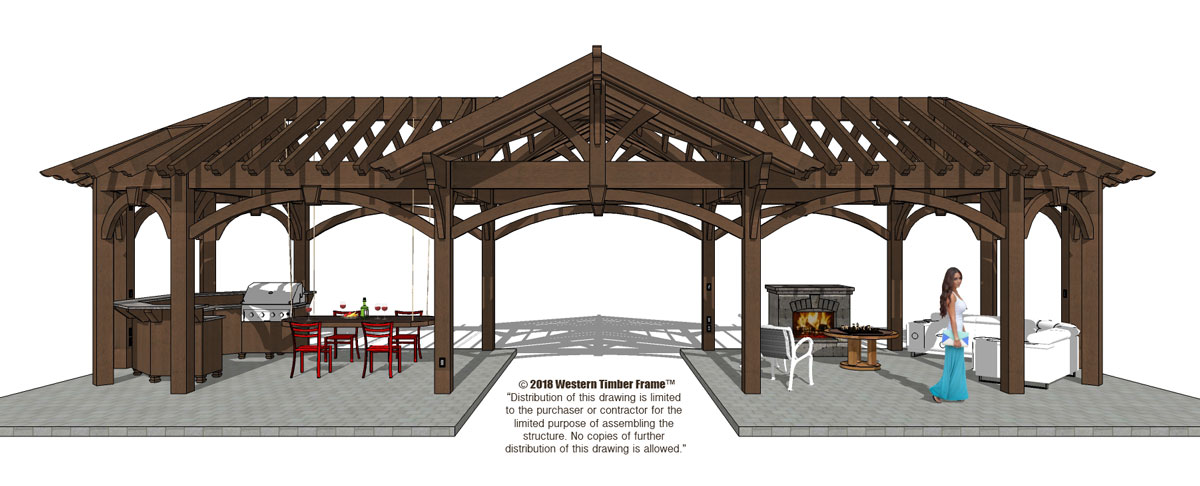
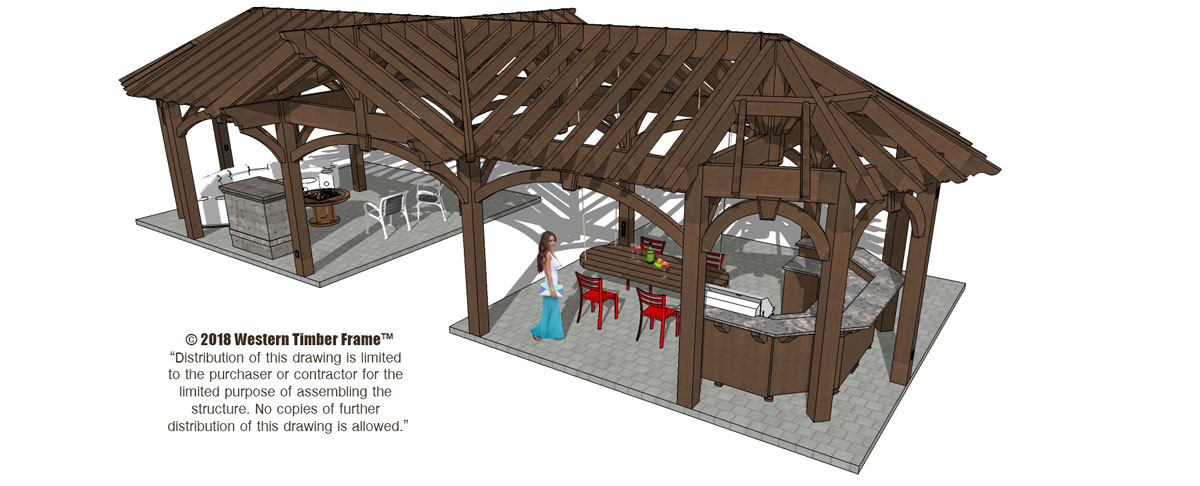
In the composition of an outdoor shade shelter, the distinct characteristics or visual expression of a gazebo are at times less distinguishable when integrated with other types of structures. In these two views of a ShadeScape® DIY plan are two halves of a gazebo attached on both ends of a cross-gabled pavilion. The design, though beautiful, may not be easily recognizable as a gazebo.
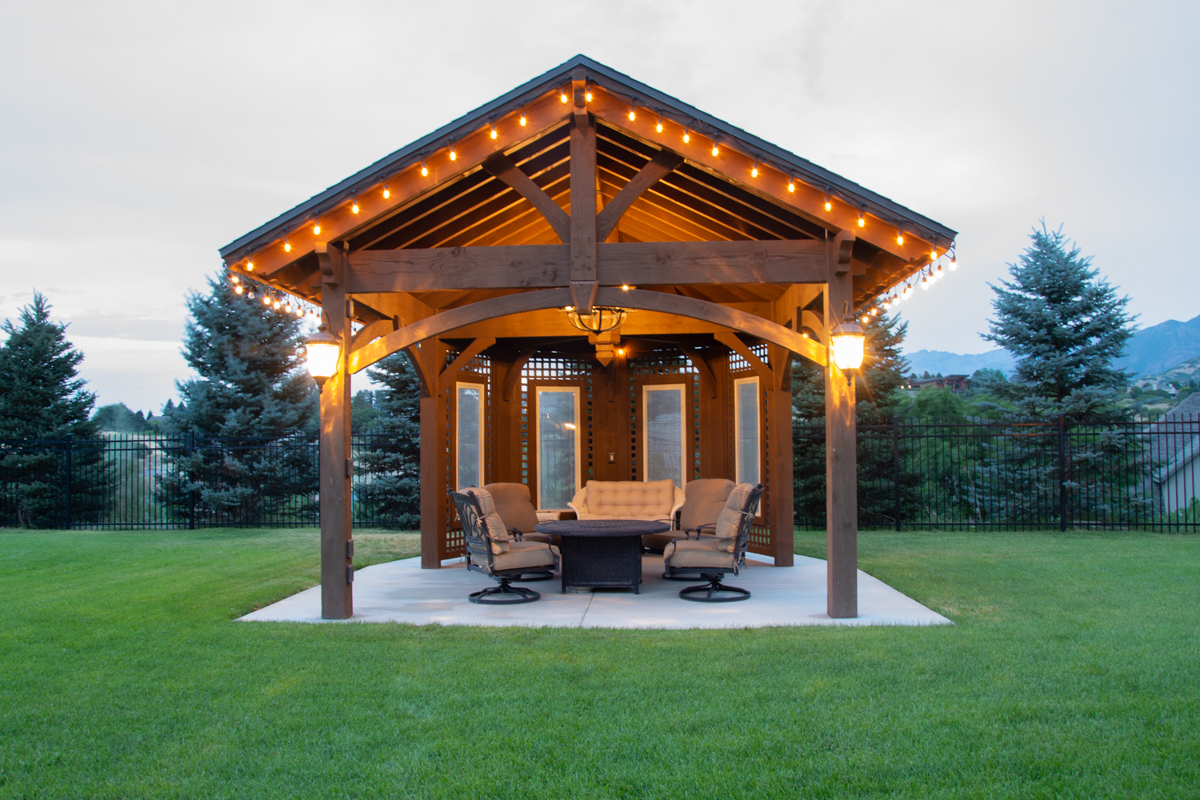
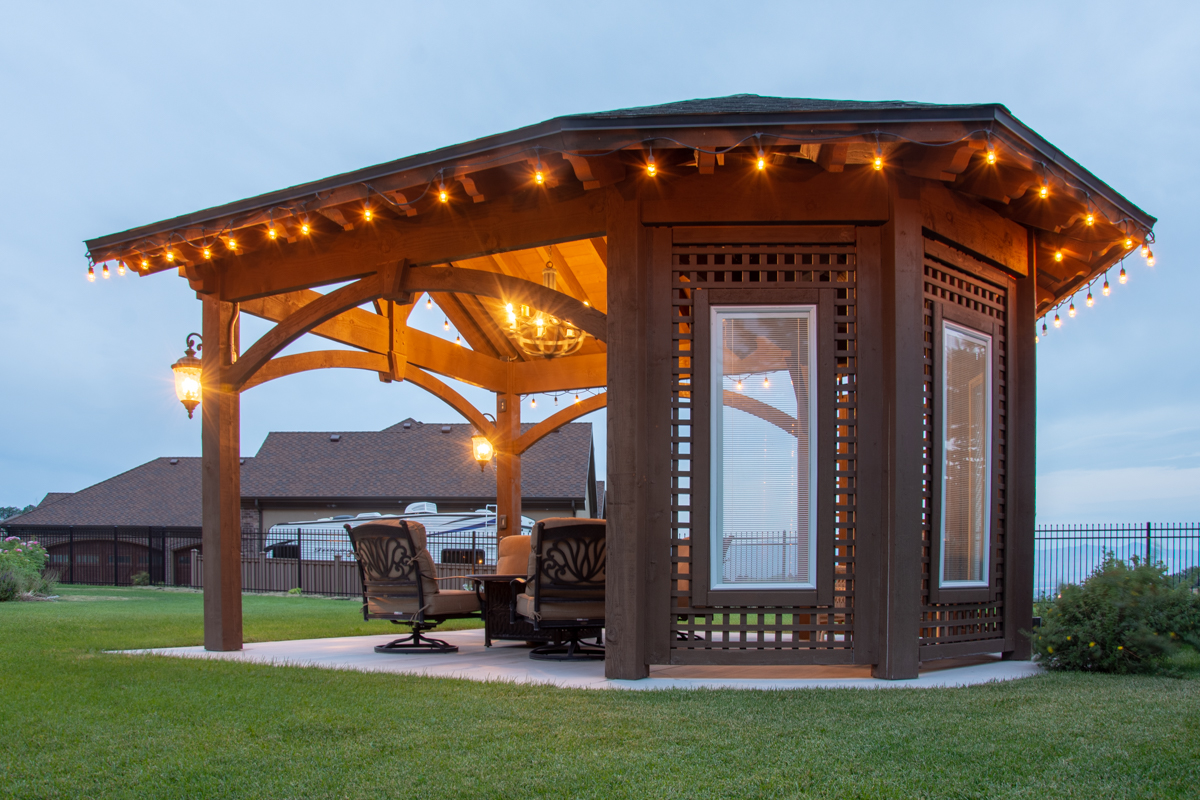
This too is a gazebo integrated with a pavilion. Connie, the owner of this ShadeScape® structure affectionately calls it her "gavilion."
It is exciting to see the beautiful new ideas built with timber in old-world craftsmanship that continue to be imagined and built. But even without integrating shelter types, attaching or installing free-standing edifices together creates some beautiful outdoor living spaces.
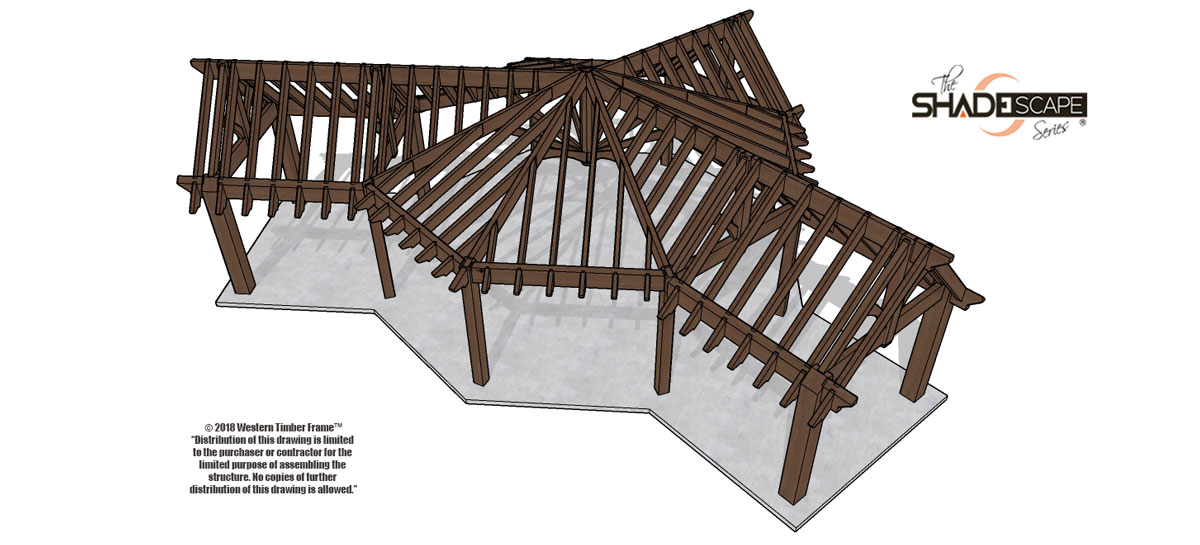
In this ShadeScape® gazebo plan with attached pavilions, the gazebo is more apparent.
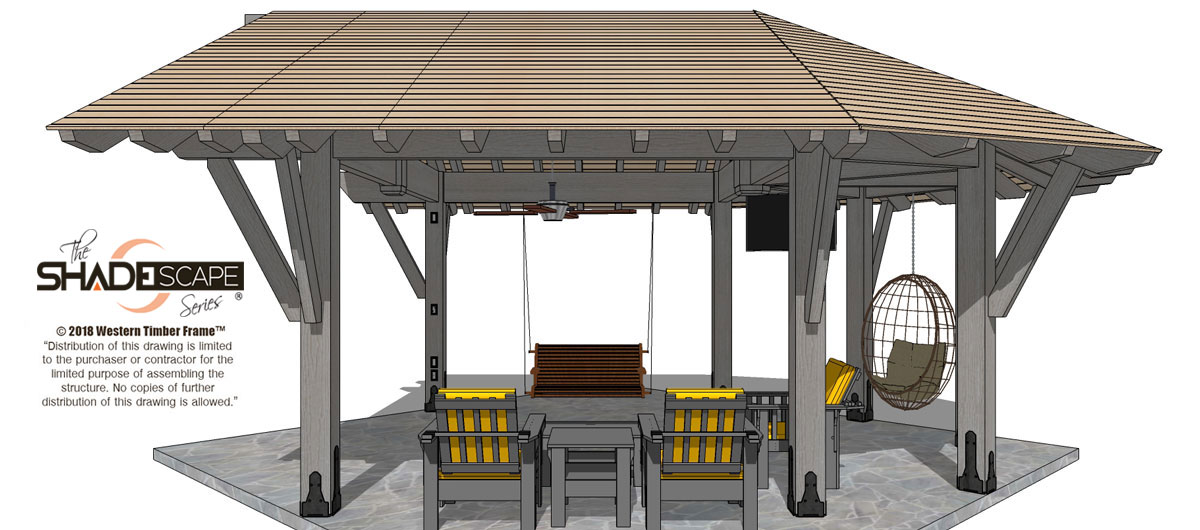
Part of defining a gazebo is most often in the shape of the roof, this one would be a bit more challenging to identify. The ShadeScape® gazebo plan has the angles of a gazebo roof as well as sporting some pavilion features.
Purpose
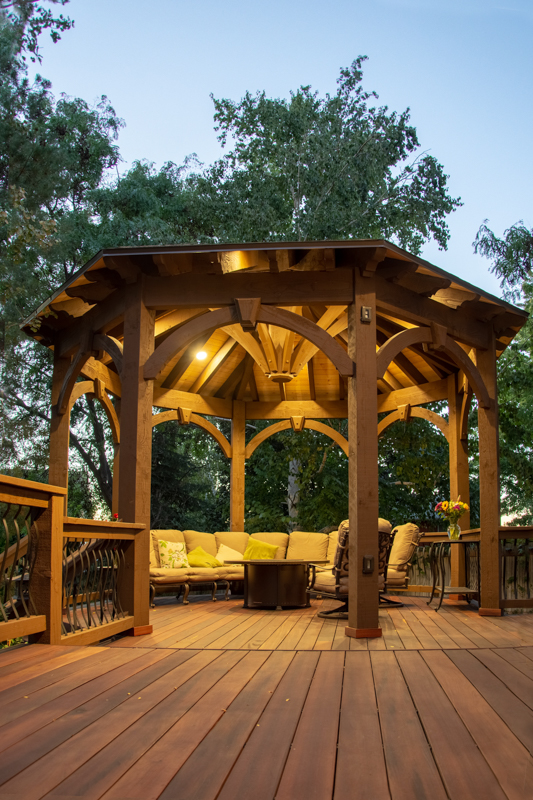
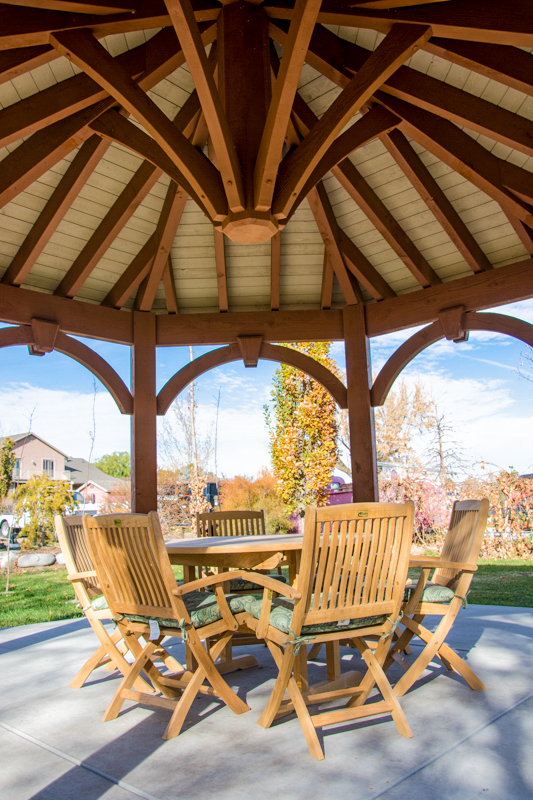
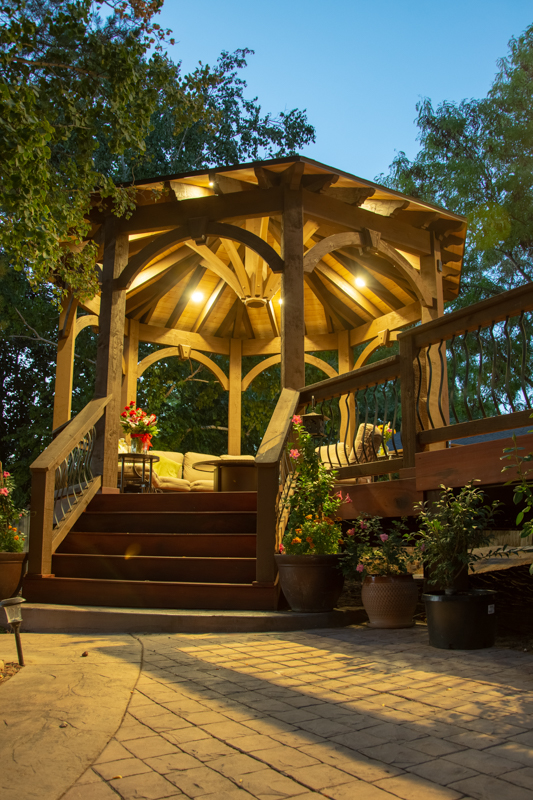
Since the root of the word gazebo is "gaze", gazebos have long been stereotyped as a place for your eyes to canvass the surrounding landscape. Gazebos are the focal point of a landscape. "The magnificent view" to gaze on is the GAZEBO!
The purpose of almost any type of outdoor living shelter is to take in the view of nature. It is the design and not the purpose that defines what a gazebo (or pergola) is.
Beyond the fundamental purposes of a pergola or gazebo, such as shade, sunlight, and getting out more in the outdoors, the way each person uses their outdoor living space is personal to their life.
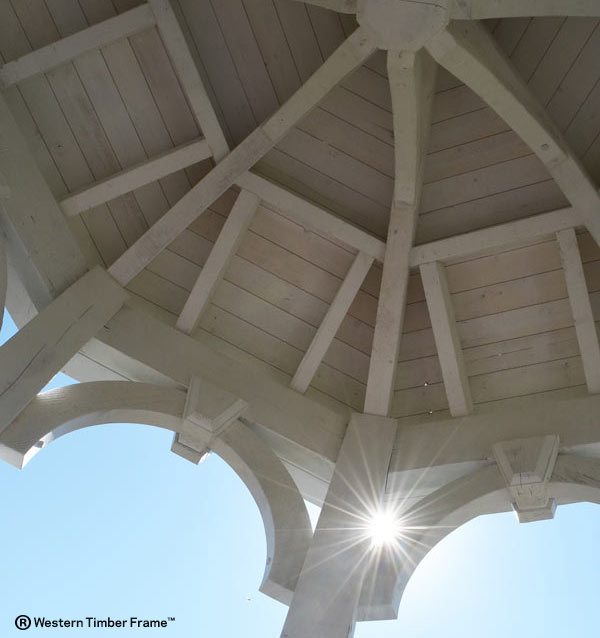
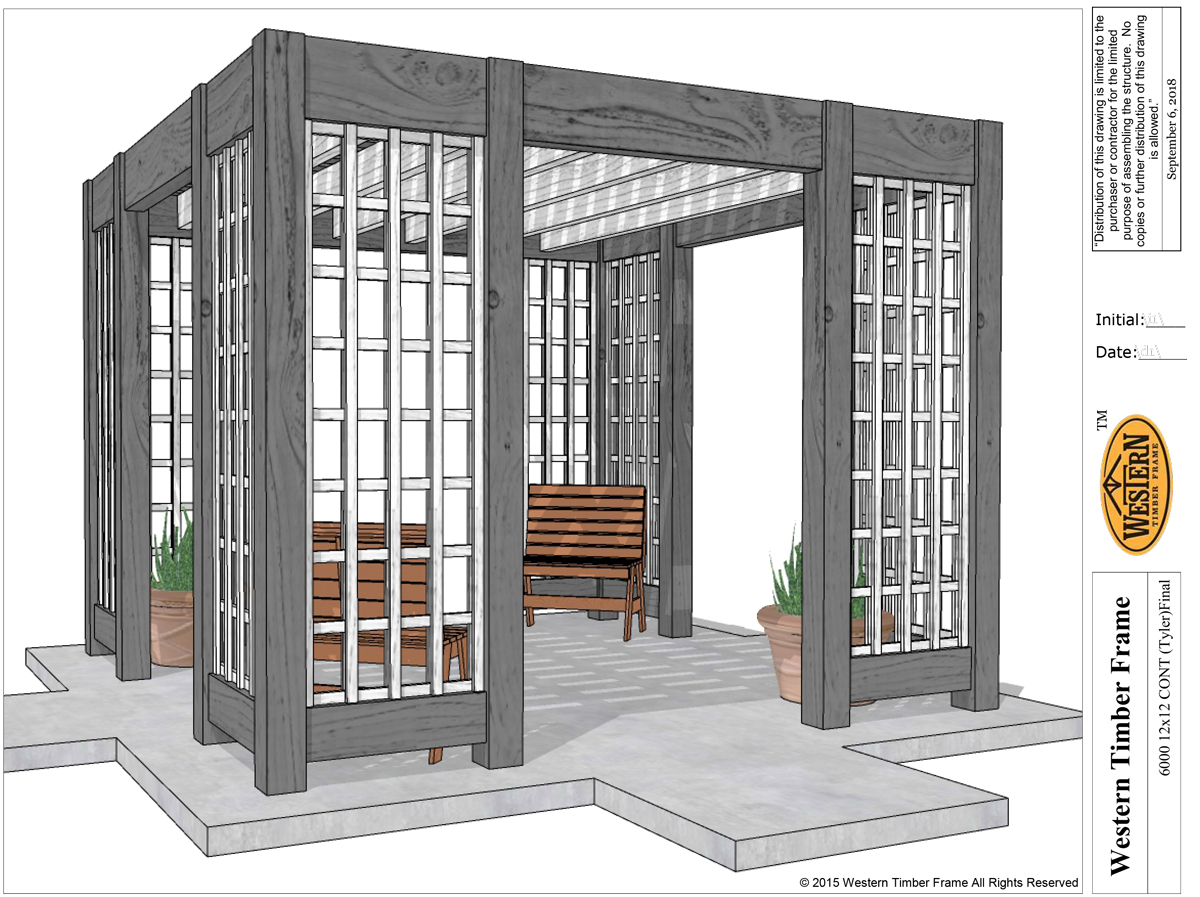
Pergola Garden Retreat
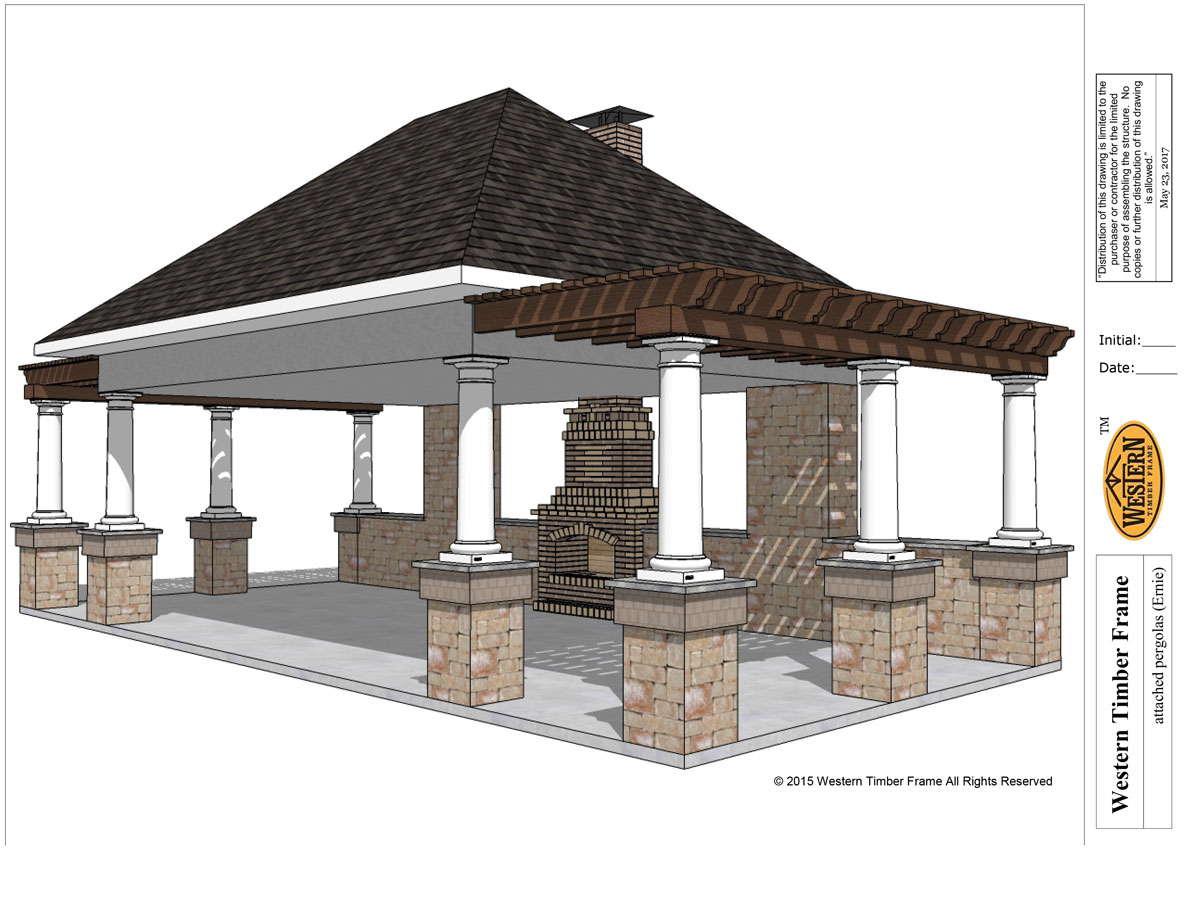
Pavilion/Pergola Living Room
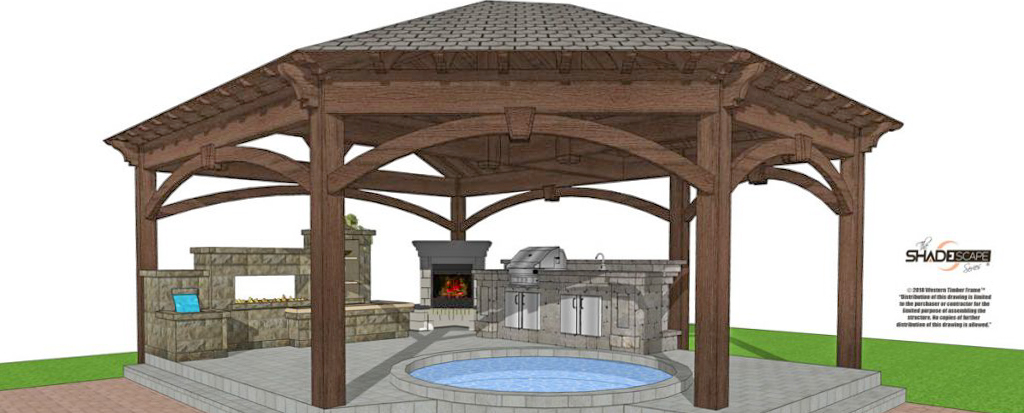
Outdoor Kitchen Gazebo
Some enjoy cooking outdoors, swimming, swinging, outdoor dining, exercise, and other activities.
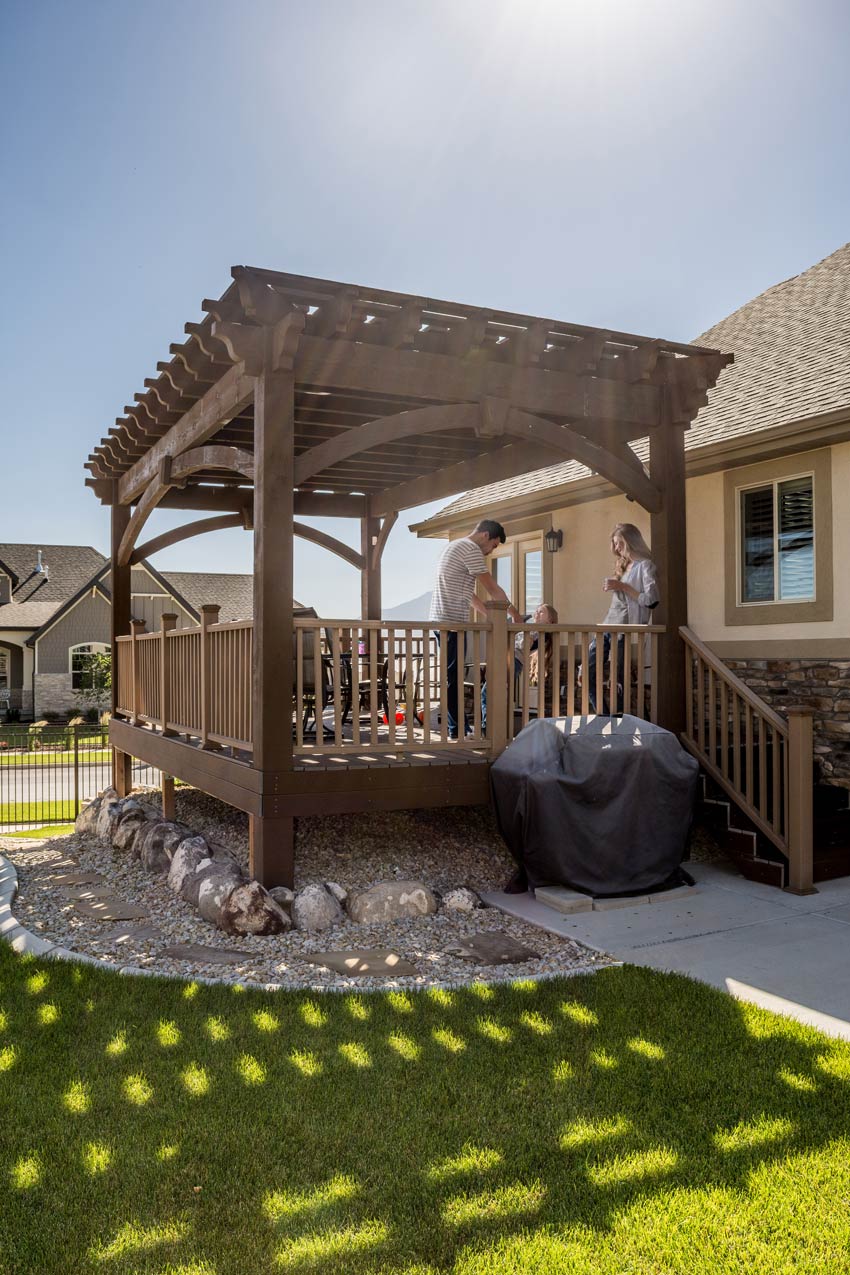
Gazebos and pergolas are both used for about every outdoor living purpose there is.
Below is the etymology of pergola and gazebo and how they have changed in many ways people use them and view them down through centuries of time.
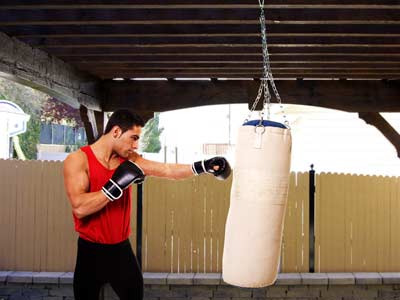
Families and businesses will continue to find new beginnings, new ways to play, work and every day living in their own unique space in the outdoors.
Construction & Installation
We usually think of buildings as a solid, stable structure; not a moving object. However, we actually live in a fluid environment. The earth is seismically moving in waves up and down as well as side-to-side in an ongoing micromotion. On top of that, wind loads add another factor to the moving force.
Western Timber Frame™ patented design The Dovetail Difference® creates an architecturally more responsible structure, allowing the wood to perform as nature intended, expanding and contracting while keeping a tight, joint and integral portion of the timber intact.

The Dovetail Difference®
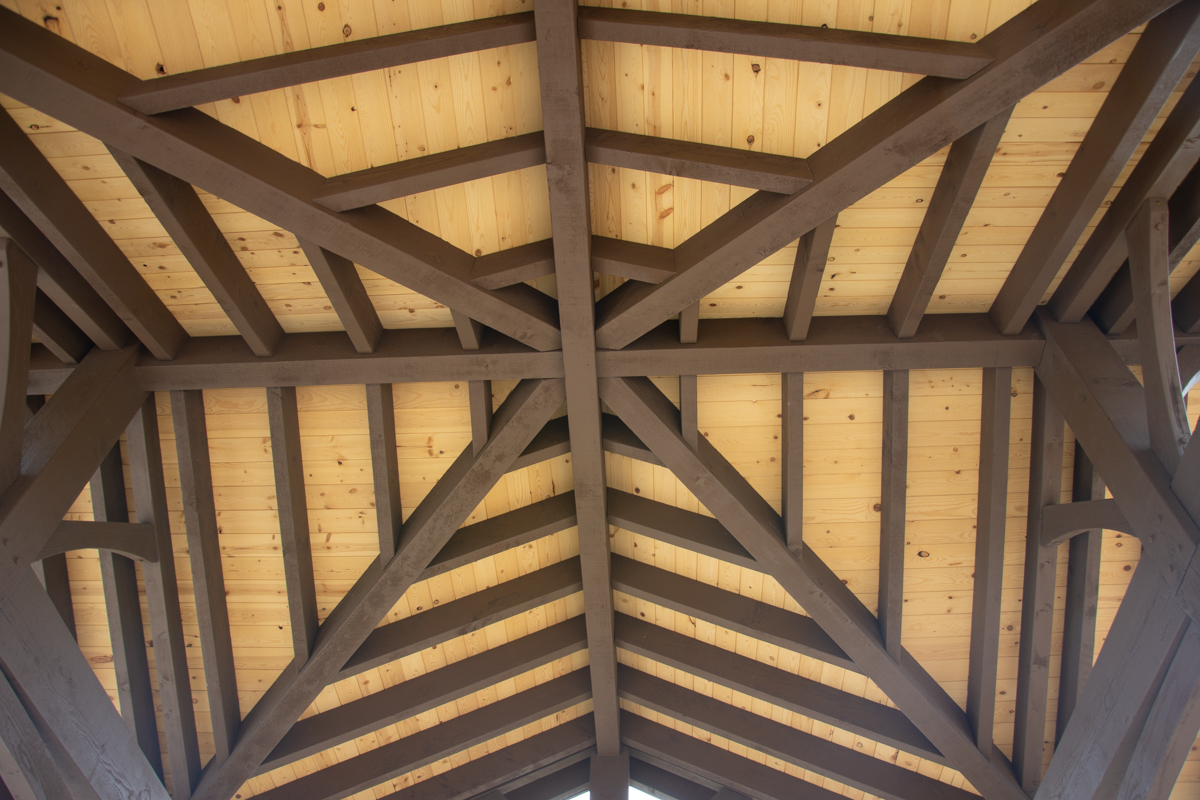
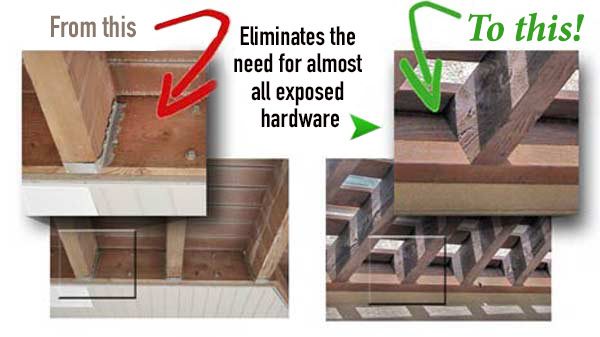
There is no visible hardware, bolts, screws, hangers or other mechanical fasteners unless they are decorative in nature.
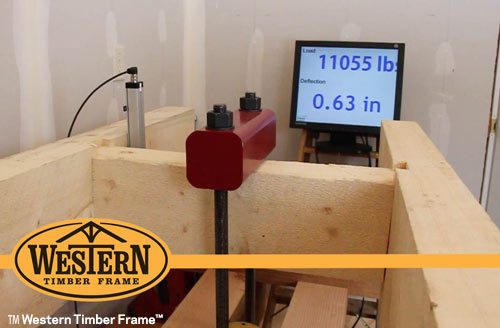
The patented design The Dovetail Difference®, the massive mortise, and tenon dovetail joint system throughout our timber construction process creates very strong, rigid joints.
On the test pictured this joint here didn’t give until it reached over 11,000 lbs.!
ShadeScape® kits are not just about refashioning for a new look but as a whole new way of living life every day. What is different about these kits is that it is not a pre-made one size fits all kit. They are only a kit in the sense that they come to your door ready to assemble. Every piece is cut and built to match homeowners' requirements for a perfect fit in their backyard. Doing a redo such as a deck and a pergola kit featured here today is a simple process that can be done in person, over a phone or via email. After the kit is delivered, hassle-free, right to the front door.
If desired, Western Timber Frame™ has certified installers, or they can help find a contractor near the location of interest. They are, however, easy to install, going together somewhat-like a set of "Lincoln Logs" many of us used to play with as kids.
As for local building codes and engineering, Western Timber Frame™ has permit approval experts. It doesn’t matter where a person lives; a Design Manager is there to assist you past any hurdles. They will help get projects approved. It is much easier than some might think.
With up to a 120 mph wind ratings, and a tremendous snow load capacity, a kit will last for years to come. With superior construction techniques, properly engineered designs, and expert craftsmanship; a timber frame structure can be expected to last a lifetime.
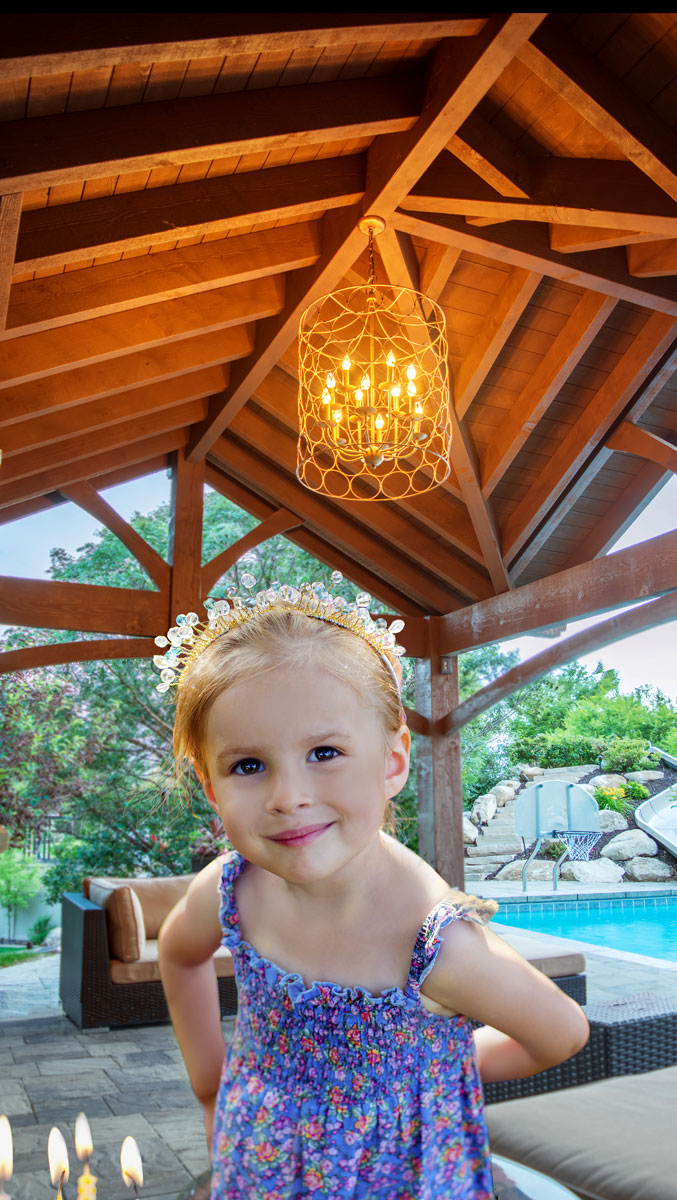
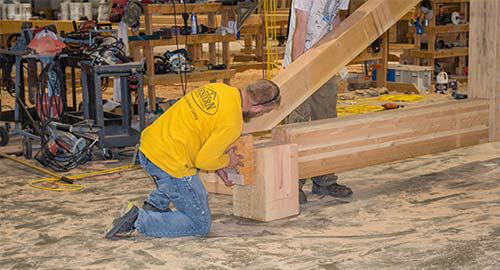
#BuildDIYPavilionKit
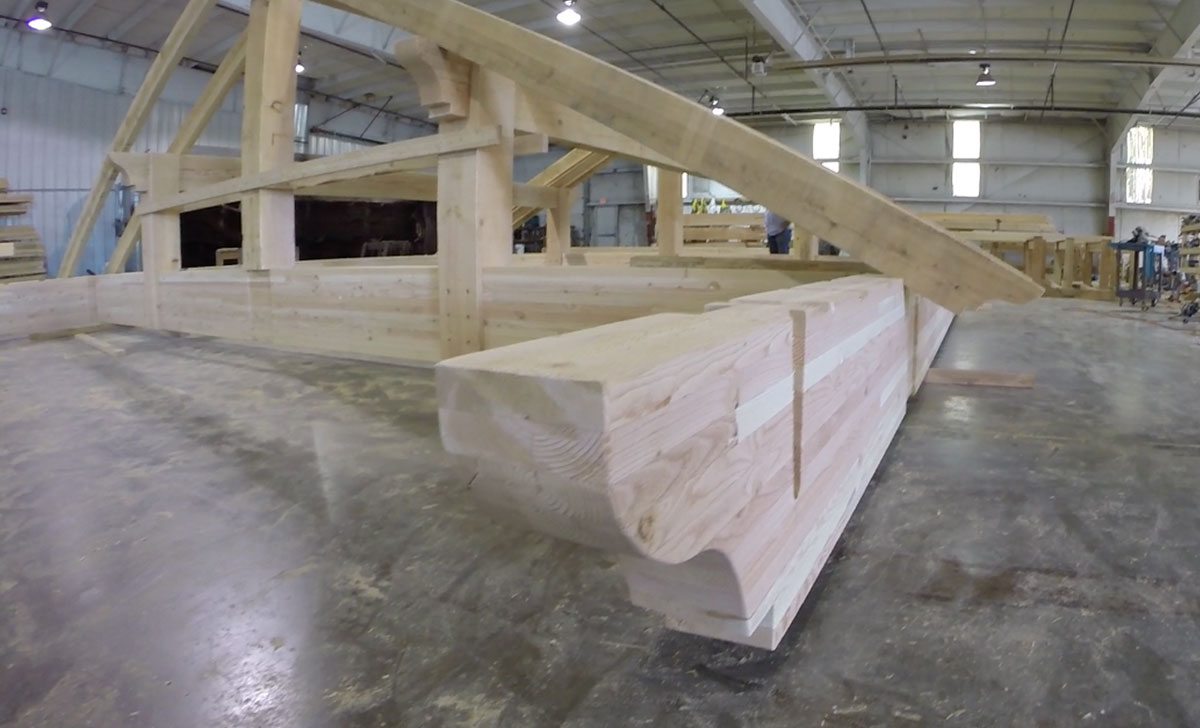
#DIYPavilionKit
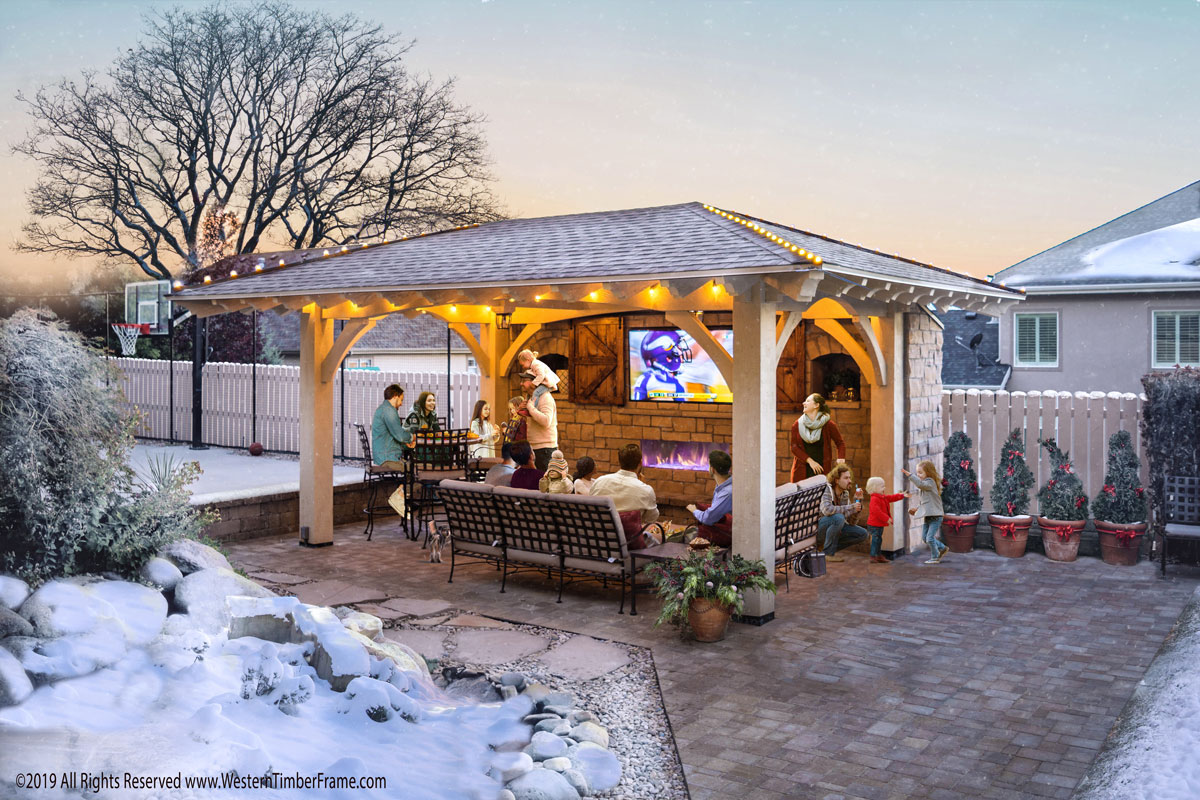
A pergola or gazebo extends your outdoor living time, creating an inviting area to gather with family and friends.
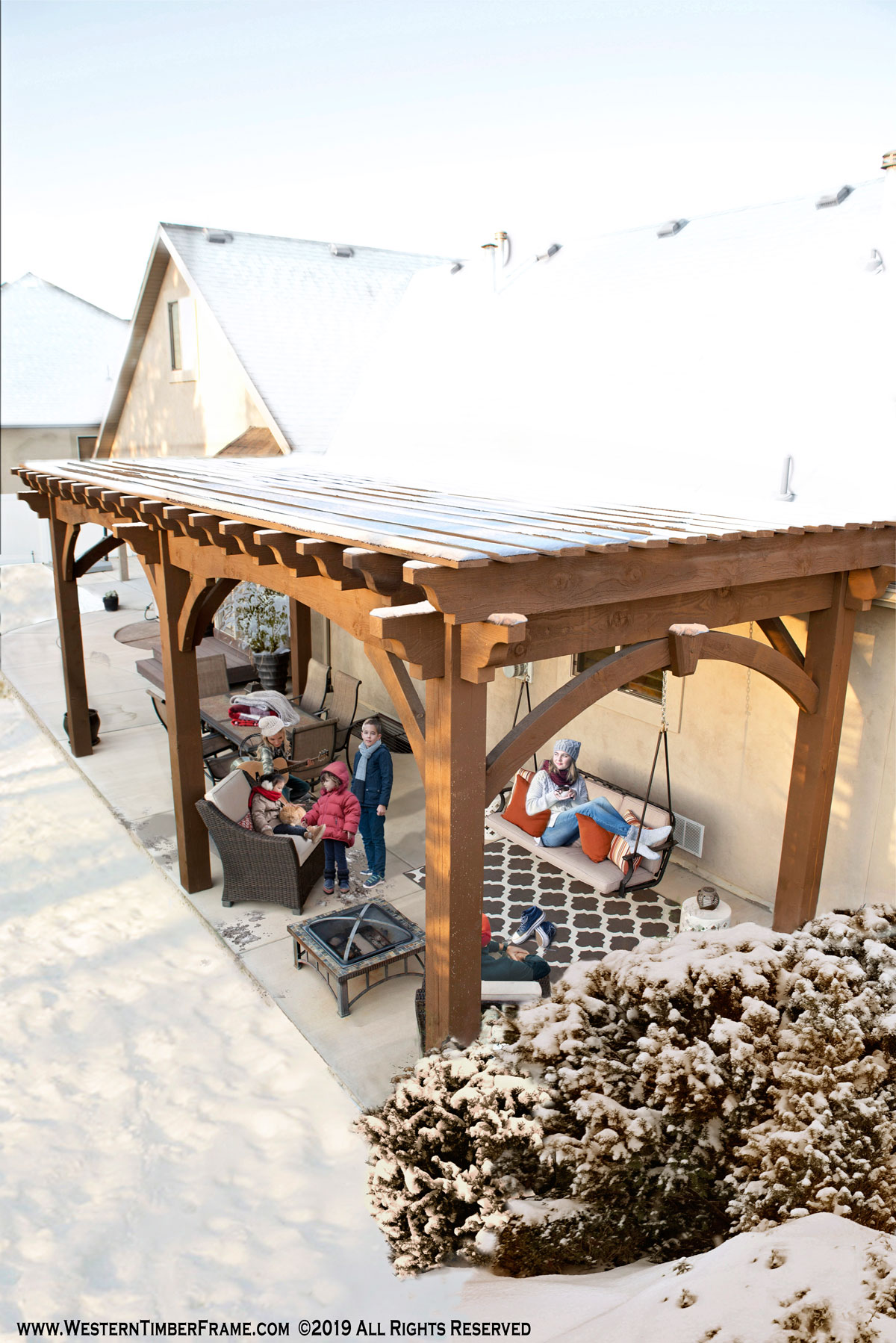
To view, the process of construction see Easily Build a Fast DIY Beautiful Backyard Shade Structure.
#DIYGazebo #DIYPergola #HowToBuildGazebo #HowToBuildPergola #DifferenceBetweenPergolaAndGazebo
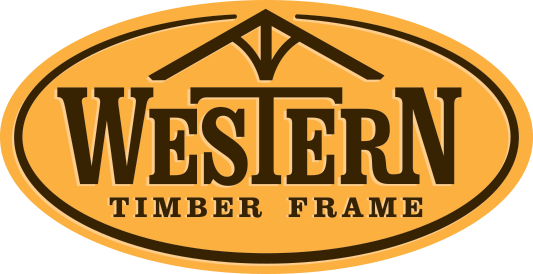
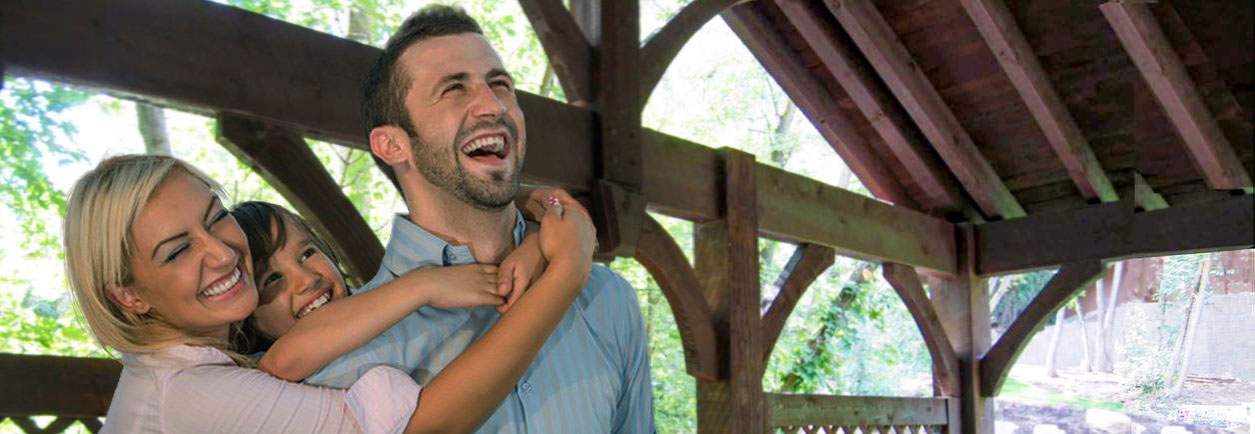

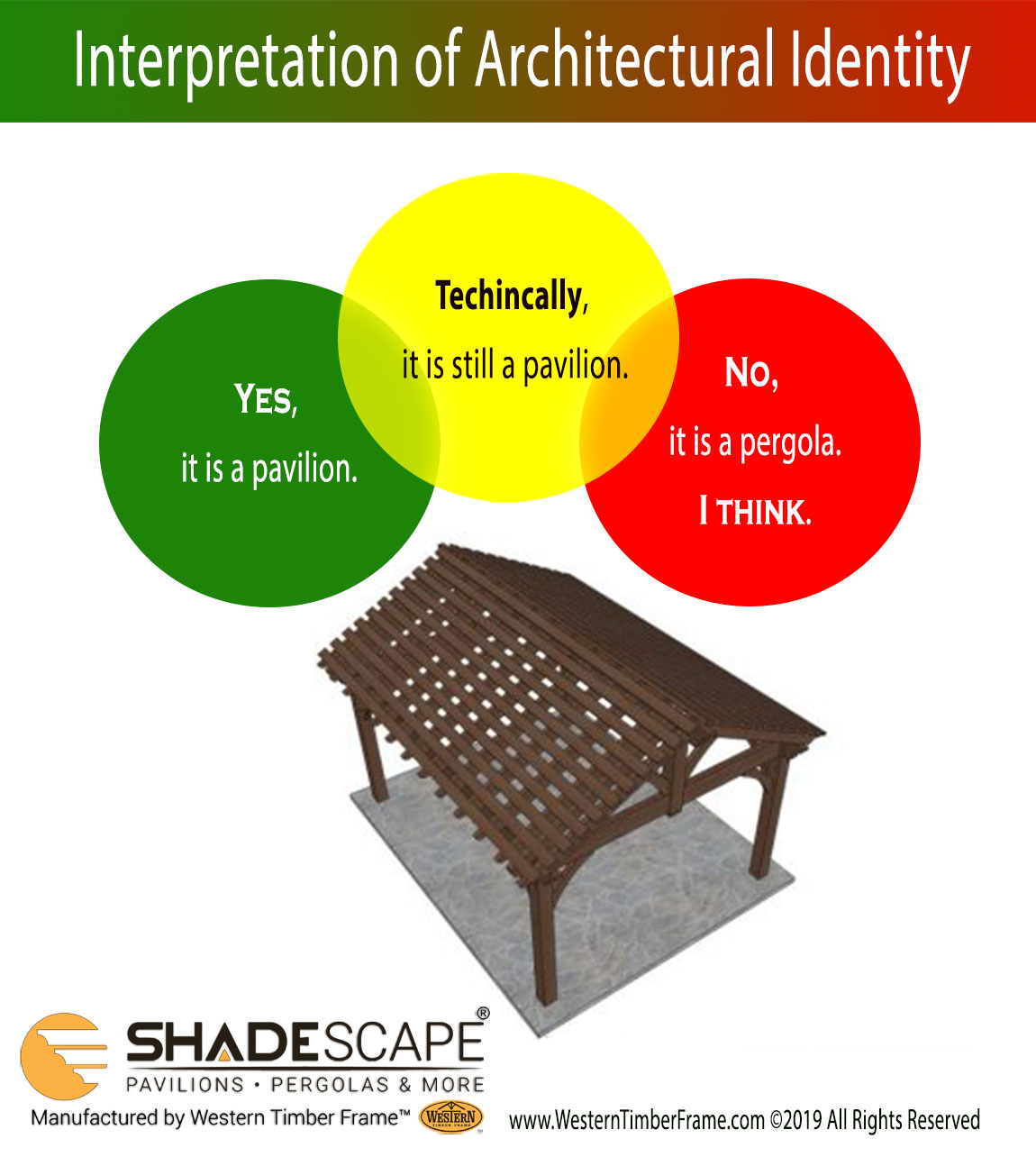
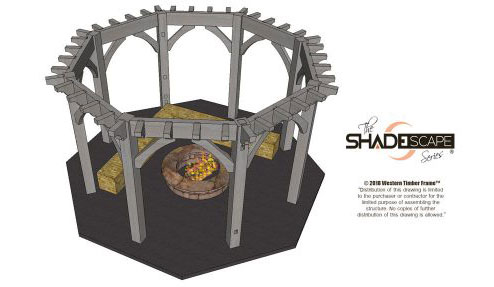
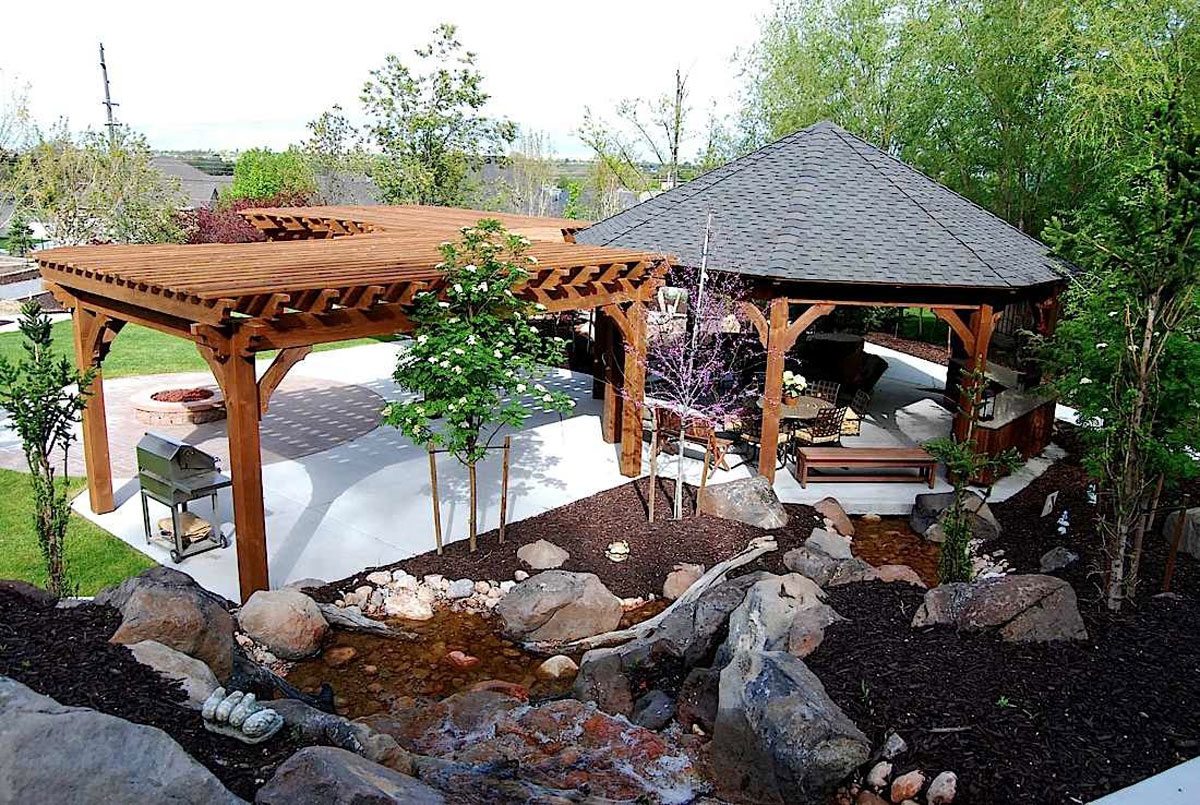
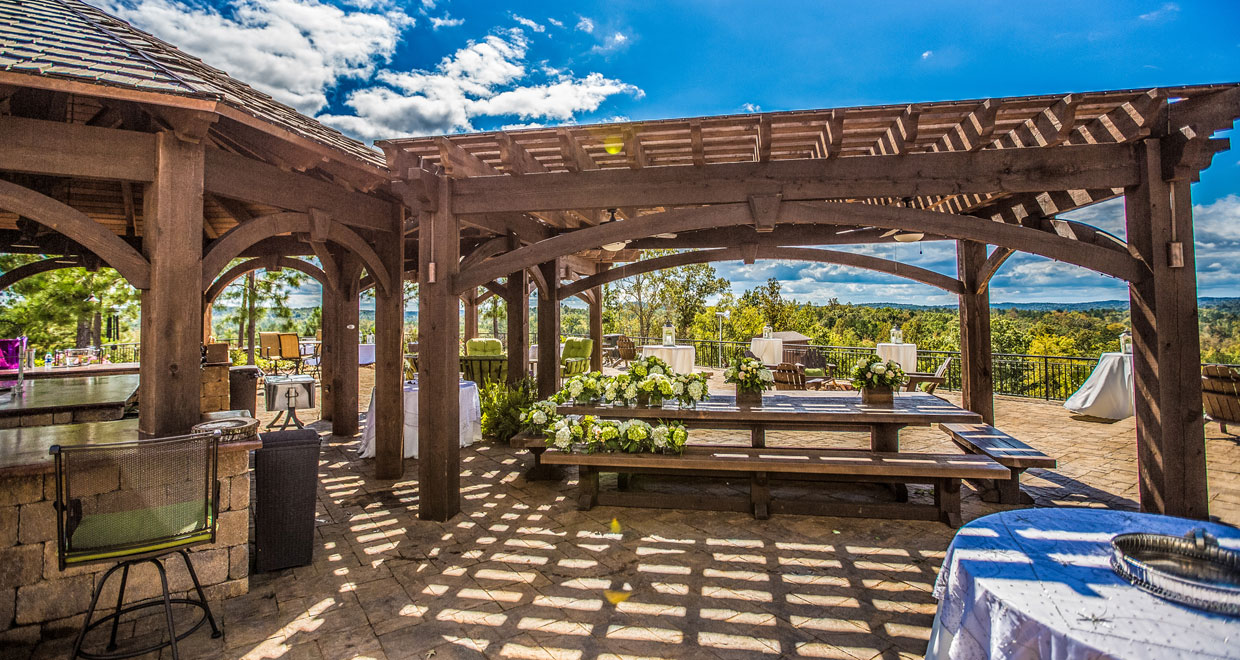
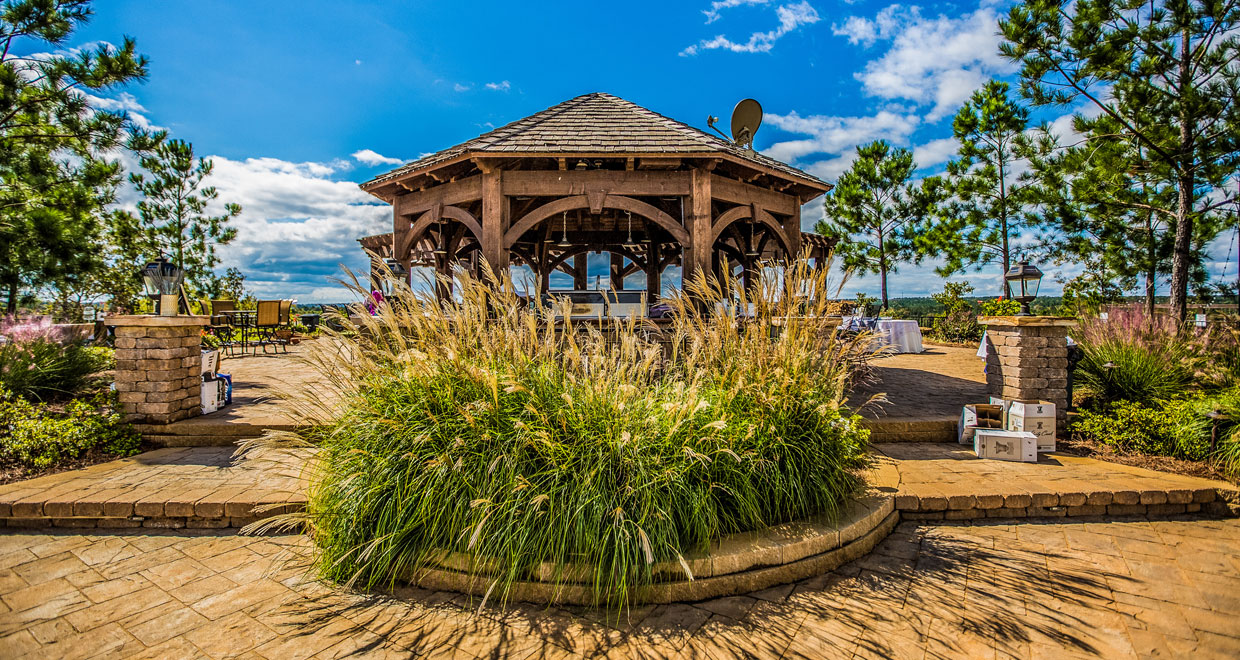
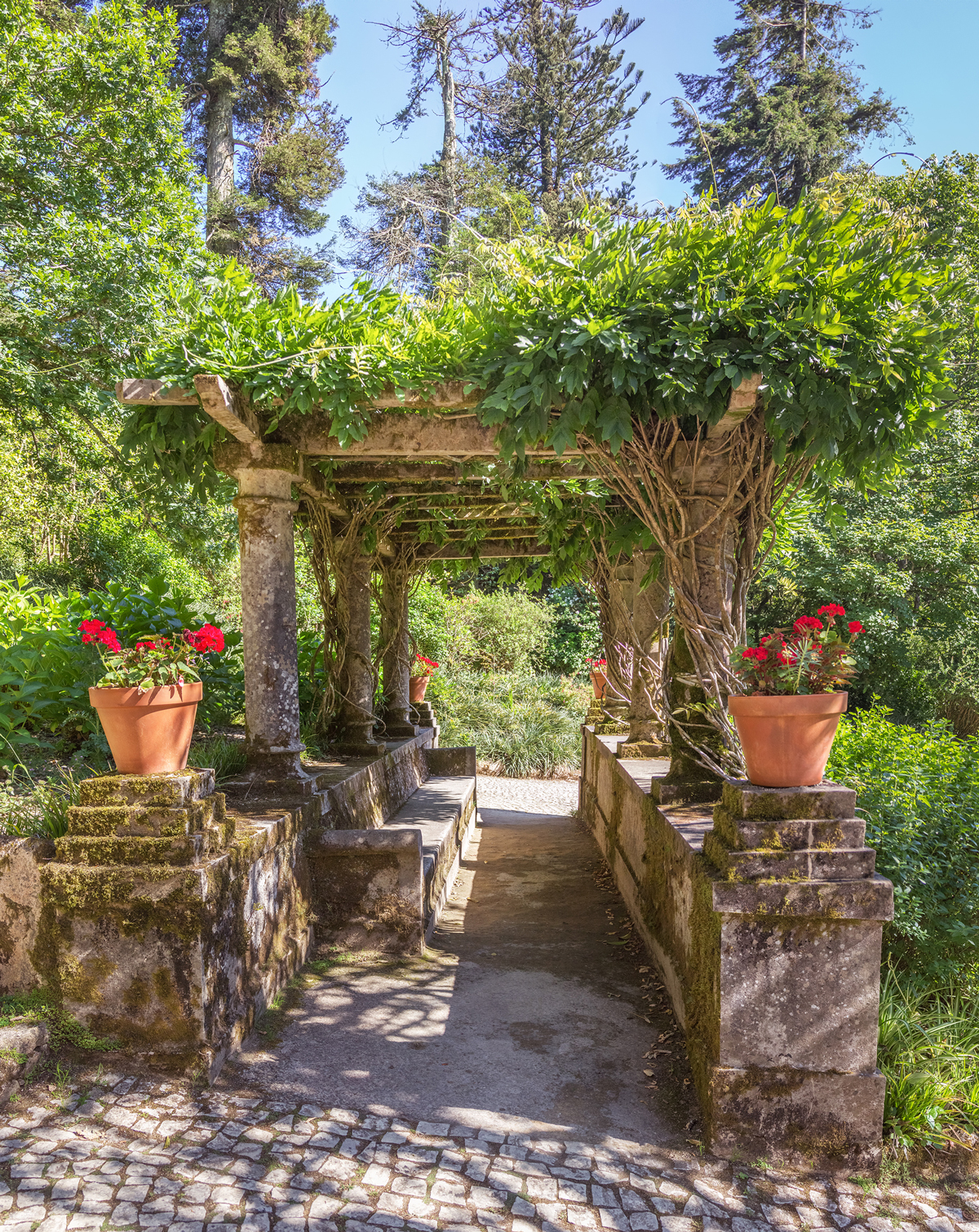
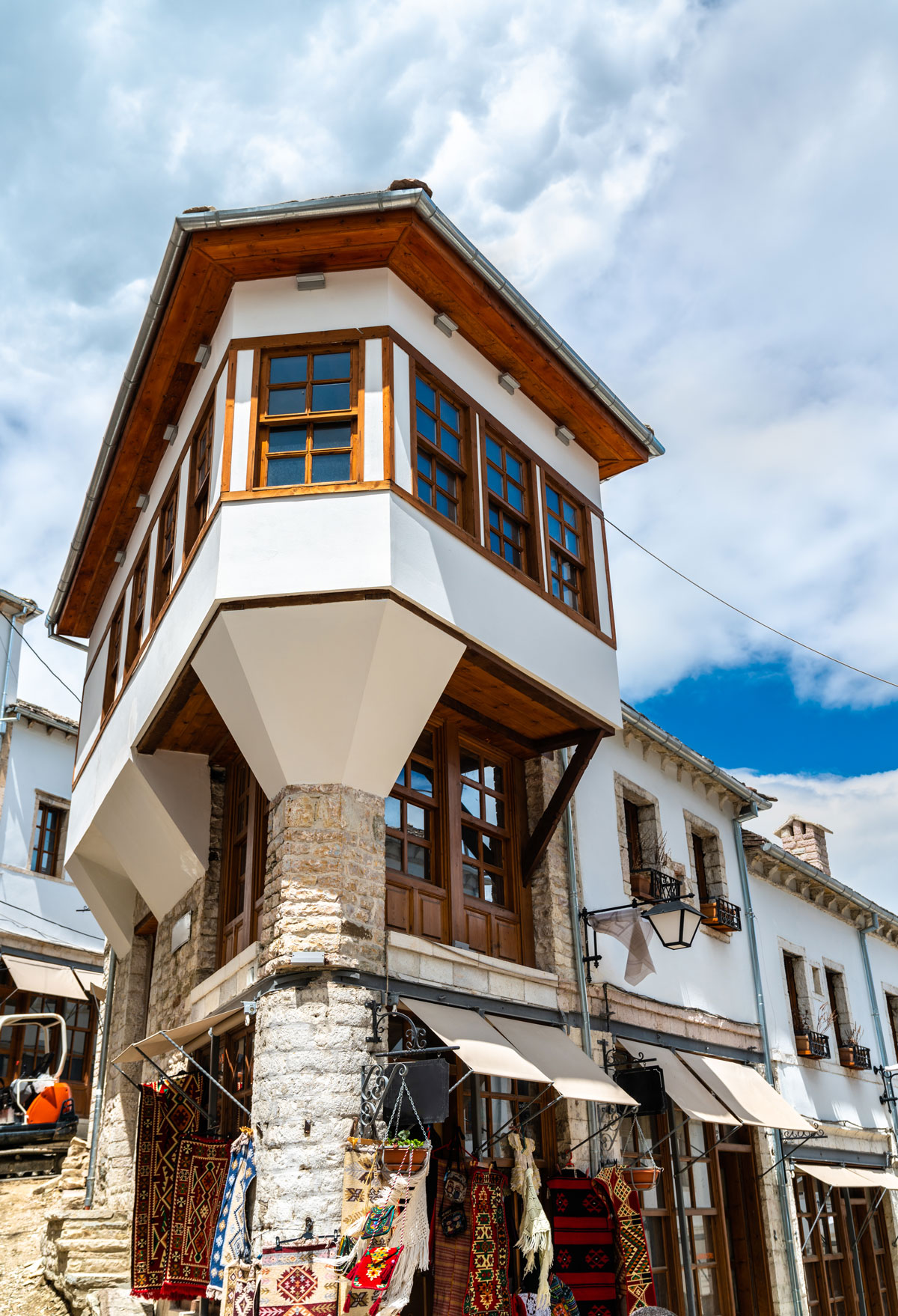
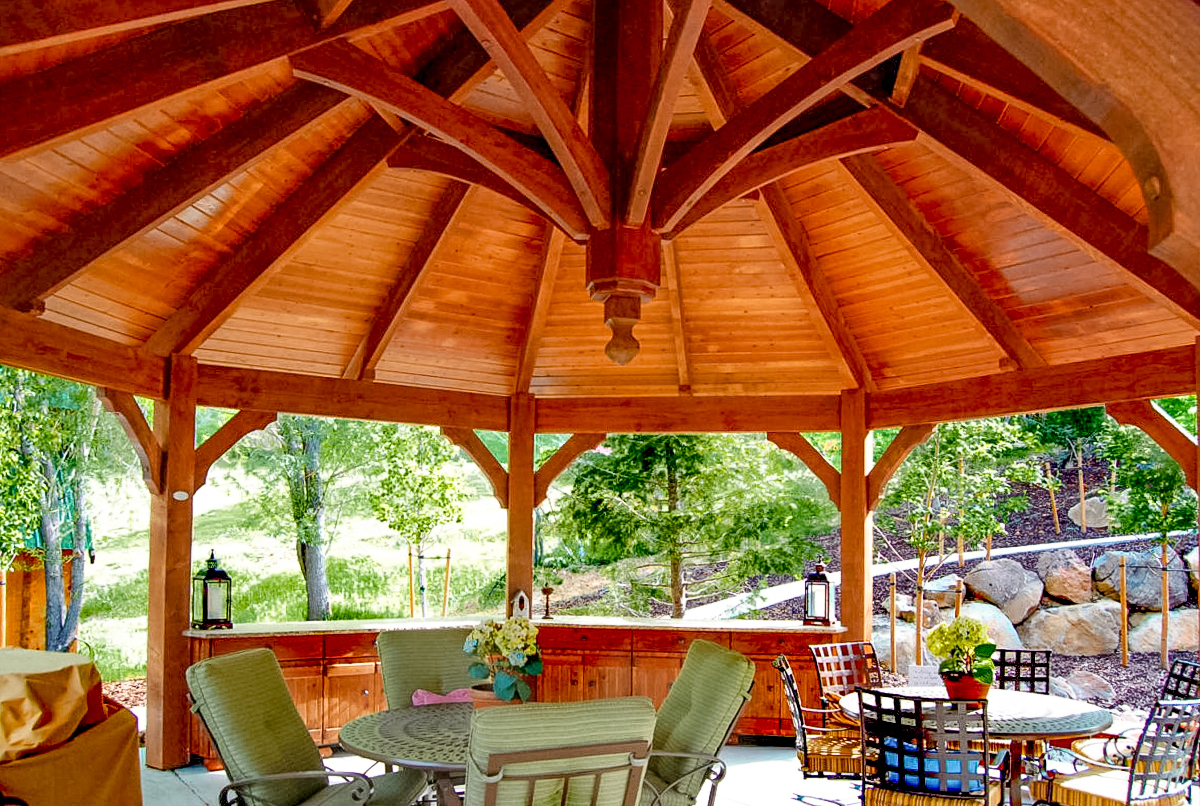
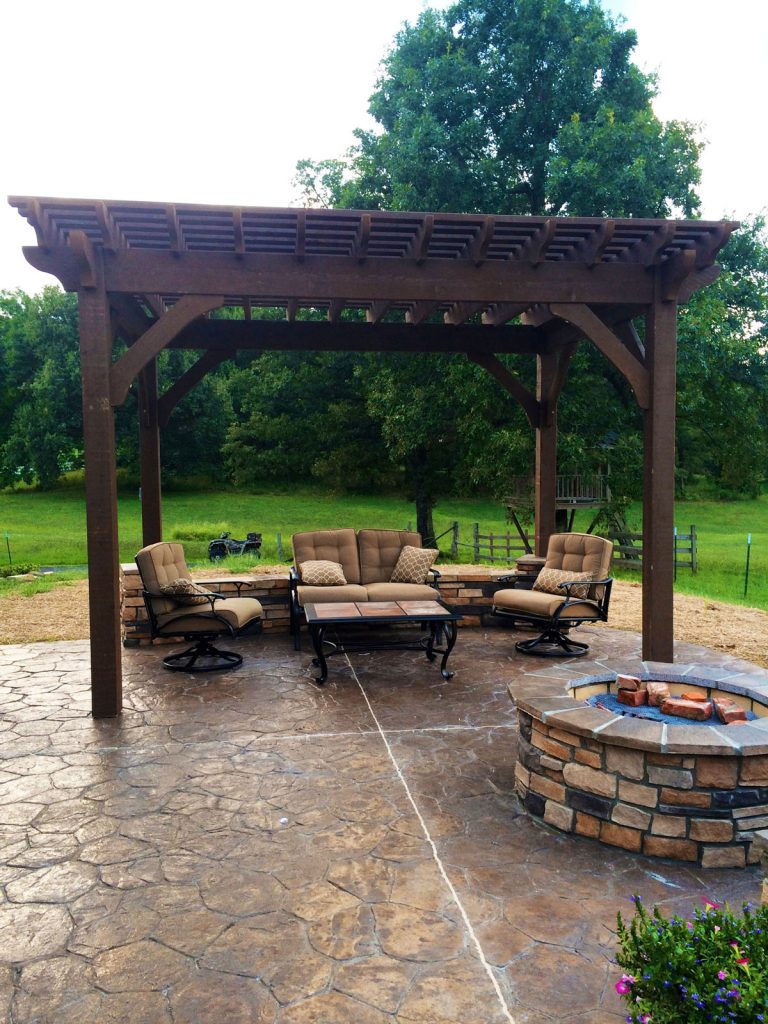
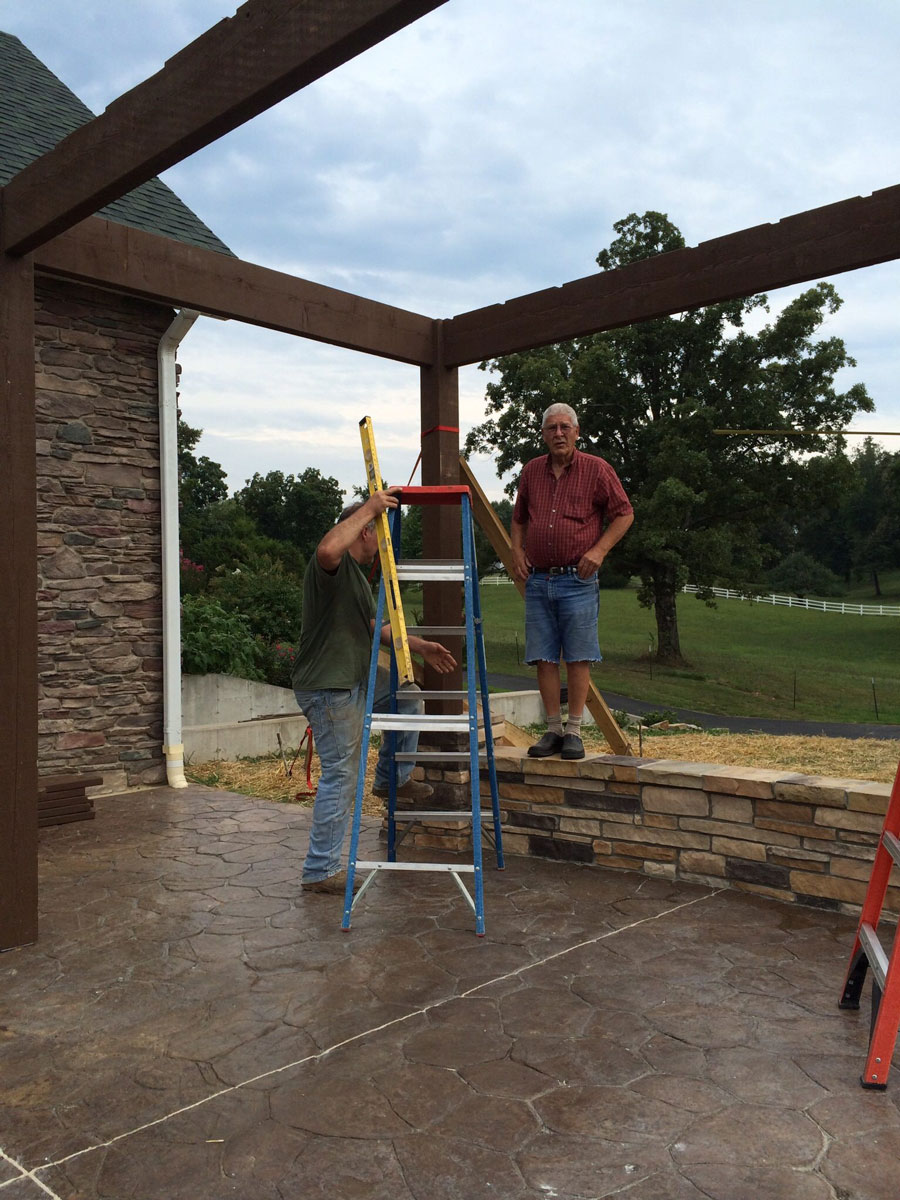

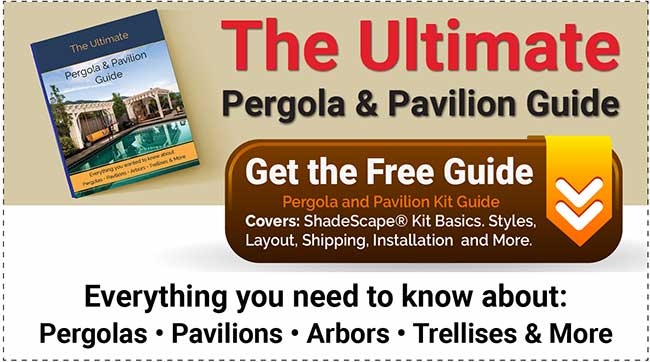
Leave a Comment